
100 Plus: How the Coming Age of Longevity Will Change Everything, From Careers and Relationships to Family And
by
Sonia Arrison
Published 22 Aug 2011
Atala’s organizations are supported through grants from an organization called the Armed Forces Institute of Regenerative Medicine (AFIRM). With a budget of over $250 million, AFIRM is an extremely important player pushing the field of regenerative medicine ahead.29 Created by the U.S. Department of Defense in 2008, it was hailed as a game-changer. Dr. S. Ward Casscells, then the assistant secretary of defense for health affairs, said that “following in the great military medical tradition of innovation, collaboration and progressive research, AFIRM will unify and apply all the recent breakthroughs in regenerative medicine while leading the charge to new ones.”30 In addition to funding groups that are growing organs and salvaging limbs and digits, AFIRM is sponsoring work on burn repair, trauma repair, facial reconstruction, and scarless wound healing.
…
Atala had already grown and implanted bladders in multiple children and teenagers suffering from a congenital birth defect that causes incomplete closure of the spine and subsequent bladder problems. Even though he pioneered the procedure in 1999, he didn’t announce his results until 2006 because he wanted to make sure it worked long term. It did. “We have shown that regenerative medicine techniques can be used to generate functional bladders that are durable,” said Atala. “This suggests that regenerative medicine may one day be a solution to the shortage of donor organs in this country for those needing transplants.”16 He grew the bladders using a method similar to how Claudia’s windpipe was built, but he didn’t rely on a donor organ. Instead, he built a scaffold out of biodegradable materials in the shape of a bladder.
…
hpt=C2. 29 AFIRM Wake Forest–Pittsburgh Consortium, “Funding for AFIRM,” www.afirmwakepitt.org/About-Us/Funding-for-AFIRM.htm. 30 U.S. Department of Defense, “New Armed Forces Institute of Regenerative Medicine to Lead Way in Caring for Wounded,” press release, April 17, 2008, www.defense.gov/reles/release.aspx?releaseid=11842. 31 See “Magic ‘Pixie Dust’ Made from Pig Bladders Helps ‘Regrow’ Limbs of Wounded Soldiers,” Daily Mail, May 5, 2010, www.dailymail.co.uk/sciencetech/article-1270990/Pixie-Dust-pig-bladders-regrows-limbs-wounded-soldiers.html#ixzz18nJxv5m0 . 32 See McGowan Institute for Regenerative Medicine, “ECM-Replacement of Lost Muscle Tissue,” www.mirm.pitt.edu/programs/clinical_translation/ECM.asp. 33 Morley Safer, “Growing Body Parts,” 60 Minutes, December 13, 2009, www.cbsnews.com/stories/2009/12/11/60minutes/main5968057_page4.shtml?
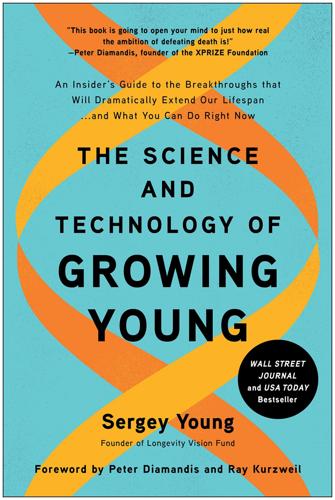
The Science and Technology of Growing Young: An Insider's Guide to the Breakthroughs That Will Dramatically Extend Our Lifespan . . . And What You Can Do Right Now
by
Sergey Young
Published 23 Aug 2021
The T cells are then reintroduced to the body, where they destroy the cancer cells and then remain on watch for the cancer to return. CAR T-cell therapy may very well end the scourge of cancer, which takes an estimated ten million lives per year. THE REGENERATIVE MEDICINE BREAKTHROUGH Another major transformation driving the Longevity Revolution is the field of regenerative medicine. During aging, the body’s systems and tissues break down, as does the body’s ability to repair and replenish itself. For that reason, even those who live very long and healthy lives ultimately succumb to heart failure, immune system decline, muscle atrophy, and other degenerative conditions.
…
Stem cell therapies are but one class of a number of so-called therapies that make up the field of regenerative medicine. The idea is really quite simple—like automobiles, our bodies suffer damage over time. And even as longevity science helps you live an additional ten, twenty, or fifty years, your critical tissues and organs will struggle to last for the duration of your prolonged life journey. Despite all the efforts and advancements of modern medicine, the laws of thermodynamics are pretty hard to beat. Ultimately all things go from a lesser state of entropy to a greater one. Our bodies are not excused from this law—we break down. Scientists in the field of regenerative medicine therefore seek not necessarily to prevent the natural breakdown of your body’s tissues and organs but rather to restore, augment, and replace them whenever possible.
…
I do not recommend that you rush out looking for stem cell injections, young blood plasma, or Yamanaka factors to reprogram your cells. We have a long way to go before these therapies are useful or even reliable. But regenerative medicine is accelerating fast, and it will see multiple waves of innovation in the coming years. Researchers at the Mayo Clinic and other leading institutions are already beginning to see promising results with stem cell regeneration in the brains of mice, reversing Alzheimer’s, Parkinson’s, and other neurological conditions.41 Regenerative medicine is a bit like intergalactic travel—we have some well-considered theories of the mechanics that should make it possible, but we don’t have the technological capability to make it happen yet.
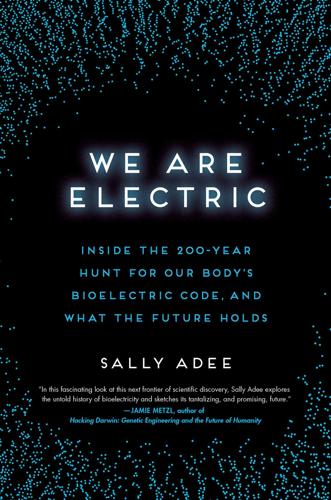
We Are Electric: Inside the 200-Year Hunt for Our Body's Bioelectric Code, and What the Future Holds
by
Sally Adee
Published 27 Feb 2023
The box is called a bioreactor, and it is placed on the stump after amputation, along with something patented to manipulate the electrical communications in the remaining tissue. It’s possible that one of the boxes contains a once-again complete set of five fingers. The results are not yet in but this Schrödinger’s appendage could change the future of an entire scientific field. “Regenerative medicine” is an umbrella term that was only invented about thirty years ago to cover the wide variety of ways people have tried to replace what has been lost to trauma or age.2 The discipline was stitched together, a bit like Frankenstein’s monster, from a disparate collection of other subdisciplines that included implant and transplant medicine, prosthetics, and tissue engineering.
…
Despite thirty years of dramatic headlines, however, most of these goals remain perpetually out of reach. “There’s no injury, no disease, no anything, where stem cell therapy is better than the other things we’re doing, after all these years,” says Stephen Badylak, who runs the McGowan Institute for Regenerative Medicine in Pittsburgh. So Levin is trying something completely different. Instead of trying to micromanage the wildly complicated universe of molecular and chemical interactions involved in building an appendage out of individual cells, he thinks it’s possible to instead turn on the bioelectric switches that shaped that mouse (and all its fingers) in the first place.
…
They’ve extended out to frogs, too, growing a new leg on an adult frog. The new leg wasn’t perfect, but it worked—the frog used it to swim around, and after a few months it even regrew toes. In 2016, Microsoft billionaire Paul Allen added nearly $10 million to Levin’s coffers. The open question now: when will it jump to humans? Electrifying regenerative medicine Stephen Badylak heads up one of the largest projects on regeneration yet undertaken. It involves fifteen different investigators from multiple disciplines at eight separate institutions, and is funded by the US Army (which, if you want to be cynical about it, is uniquely incentivized to help heal the soldiers it has thrown into the geopolitical shredder).

Hacking the Code of Life: How Gene Editing Will Rewrite Our Futures
by
Nessa Carey
Published 7 Mar 2019
It can regrow it in about a month and a half. No mammal or bird can do anything like this. For both curiosity and for potential medical improvements, we’d love to know how these adorable little salamanders pull this trick. And we’d like to know if we can adapt their abilities in order to improve human regenerative medicine. This is becoming an area of intense focus, because of the ageing human population. Many of our tissues didn’t evolve to keep going for the long periods for which many of us now live. Medical science isn’t trying to help us grow new limbs, just to improve the functions of worn-out body parts.
…
The barriers are too high and the complexity too great to make this likely in the lifetime of anyone reading this book. Dr Curt Connors in Spiderman – aka The Lizard – is not on anyone’s therapeutic horizon.* But axolotls can also regenerate their spinal cord after severe injury and this is a much more appealing regenerative medicine opportunity. Genetic modification has been used to probe the importance of specific genes in spinal cord regeneration in axolotls.7 The hope is that eventually this will lead to a detailed understanding of how the axolotl repairs this vital tissue, and which parts of the process are missing/acting differently in humans.
…
1 ethics 1, 2 legal considerations 1 gluten proteins 1 GM crops/foods 1, 2 goats 1, 2 Golden Rice 1 gout 1 Greenpeace 1 growth hormone 1 Gruber Prize in Genetics 1 Guardian of the Genome 1 guide molecule 1, 2 H haemoglobin 1 adult 1 foetal 1 Harvard Medical School 1 He Jiankui 1, 2, 3, 4 health economics 1, 2 heart attacks 1 heel prick test 1 Helicobacter pylori 1 hereditary angioedema 1 heredity 1 HIV-1 1 hops 1 hormone deficiency 1 hormone replacement therapy 1 humans gene editing in 1 genetic disorders in see genetic disorders genome sequence 1 Hunter’s syndrome 1, 2 Huntington’s disease 1, 2, 3 I immune cells 1 immune defenders 1 immunity adaptive 1 bacterial 1 Imperial College London 1 influenza 1 vaccine 1 informed consent 1 insecticides 1 insects, gene editing in 1, 2 Institute of Livestock and Grassland Science (Tsukuba) 1 insulin 1, 2, 3 intellectual property 1, 2 iridescence 1 irradiation 1 IVF 1, 2, 3, 4, 5, 6 J Johannsen, Wilhelm 1 K Kanuma 1 Kavli Prize 1 Kennedy, John F. 1 Kenya 1 kidneys 1 King’s College London 1 Komodo dragons 1, 2 L The Lancet 1 Lander, Eric 1 Latin America, invasion by Europeans 1 learning disability 1 Leber’s congenital amaurosis 1 Leigh syndrome 1 Lepidoptera 1 Lesch-Nylan syndrome 1 life expectancy 1 Linnaeus, Carl 1 liver 1, 2 London Underground 1 Lulu 1 M macular degeneration 1 Madeux, Brian 1 maize 1 malaria 1, 2, 3 Marraffini, Luciano 1 Marshall, Barry 1 ‘matching’ 1 McCullough, Candy 1 measles 1 meat consumption 1 lean 1 medical self-experimentation 1 melanin 1 Mendel, Gregor 1 Merino sheep 1 mice 1, 2 Michelangelo 1 mitochondria 1 MMR vaccine 1 Mojica, Francisco 1 mosquitoes 1, 2 Friendly Mosquito 1 moths 1 mouse cell lines, gene editing in 1 multiple sclerosis 1, 2 muscle development 1, 2 muscle wasting 1, 2 mushrooms 1 mutations 1, 2 myostatin gene 1, 2 N Nana 1 narcolepsy 1 National Institute for Health and Care Excellence 1 Nature Methods 1 neonicotinoids 1 neurodegeneration 1, 2 neurons 1 New Hope Fertility Centre (New York) 1 New Zealand 1 Nixon, Richard 1 Nobel Prize 1 O oral contraceptives 1 organ transplantation 1, 2 over-consumption 1, 2 Oxitec 1 oxygen 1, 2 P p53 1 paracetamol 1 Parkinson’s disease 1 Parton, Dolly 1 patents 1, 2 peas 1 peer review 1 Perdue, Sonny 1 pesticides 1 pharmaceuticals 1 phenylketonuria (PKU) 1 Piedmont cattle 1 pigs 1, 2, 3, 4 organ transplants from 1 pituitary gland 1 plant cells 1 plants first gene-edited 1 gene editing in 1 speeding up breeding 1 polio 1 pollinating insects 1 population, world 1 potatoes 1 pre-implantation genetic diagnosis 1 pre-natal testing 1 Predator Free 2050 1 prickly pear cactus 1 privileged sites 1 proteins 1 PRRSV 1 Purdue University (Indiana) 1 Pusztai, Árpád 1 R rabbits 1, 2 radiation 1, 2 raptors 1 rats 1, 2 recessive genetic disorders 1 red blood cells 1 regenerative medicine 1 research flawed 1 investments in 1 retinitis pigmentosa 1 rheumatoid arthritis 1, 2 rice Golden 1 yields 1 Riley, Eleanor 1 risk, assessing 1, 2 RNA 1, 2 Rochester, University of 1 Rockefeller University (New York) 1 rodents 1 Roslin Institute 1 Royal Society 1 S safety, drug 1 salinity 1 Sangamo Therapeutics 1 schizophrenia 1 Science journal 1, 2, 3 scissors 1 self-mutilation 1 sheep 1 Merino 1 Texel 1 Shiant Isles 1 sickle cell disease 1, 2, 3, 4 sign languages 1 Šikšnys, Virginijus 1 single gene disorders 1, 2 sketching gene 1 skin blistering 1 sleeper agents 1 small molecules 1, 2 snakebites 1 South Georgia 1 space programme 1 spacers 1 sperm 1, 2, 3, 4 mosquito 1 spinal cord regeneration 1 St John’s wort 1 Stanford University (California) 1, 2 statins 1, 2, 3 stem cells 1, 2 stick insects 1 Stockholm 1 stomach ulcers 1 strawberries 1 strokes 1 structural colouration 1 suicide genes 1 super-beings 1 Surani, Azim 1 T tetracycline 1 Texel sheep 1 thalassemias 1, 2, 3 U UCP1 gene 1 UK, three-parent procedures 1 University of California, Berkeley 1, 2, 3, 4 University of California, San Diego 1 University of California, San Francisco (UCSF) 1, 2 uric acid 1 US Department of Agriculture 1, 2, 3 US Patent Office 1 V vaccination 1, 2 Vertex Pharmaceuticals 1 Viagra 1 Victoria, Queen 1 Vienna, University of 1, 2 Vilnius, University of 1 viral infections 1 vitamin A 1 W Wakefield, Andrew 1 Washington Post 1 water, competition for 1 Watson, James 1 wheat 1, 2, 3 Wilkins, Maurice 1 wisdom 1 World Health Organization 1, 2, 3 X xenotransplantation 1 Y Yamanaka, Shinya 1 yeast 1, 2 yellow fever 1, 2 yields, of crops 1 Z Zayner, Josiah 1 Zhang, Feng 1, 2, 3, 4 Zika virus 1, 2 zygotes 1, 2, 3 ABOUT THE AUTHOR Nessa Carey worked in the biotech and pharma industry for thirteen years and is a Visiting Professor at Imperial College London.
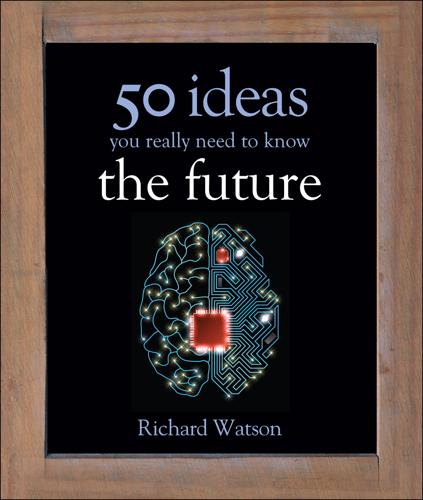
50 Future Ideas You Really Need to Know
by
Richard Watson
Published 5 Nov 2013
ISBN 978-1-62365-195-4 Distributed in the United States and Canada by Random House Publisher Services c/o Random House, 1745 Broadway New York, NY 10019 www.quercus.com Contents Introduction POLITICS & POWER 01 Ubiquitous surveillance 02 Digital democracy 03 Cyber & drone warfare 04 Water wars 05 Wane of the West ENERGY & ENVIRONMENT 06 Resource depletion 07 Beyond fossil fuels 08 Precision agriculture 09 Population change 10 Geo-engineering THE URBAN LANDSCAPE 11 Megacities 12 Local energy networks 13 Smart cities 14 Next-generation transport 15 Extra-legal & feral slums TECHNOLOGICAL CHANGE 16 An internet of things 17 Quantum & DNA computing 18 Nanotechnology 19 Gamification 20 Artificial Intelligence HEALTH & WELL-BEING 21 Personalized genomics 22 Regenerative medicine 23 Remote monitoring 24 User-generated medicine 25 Medical data mining SOCIAL & ECONOMIC DIMENSIONS 26 Living alone 27 Dematerialization 28 Income polarization 29 What (& where) is work? 30 The pursuit of happiness TOWARD A POSTHUMAN SOCIETY 31 Human beings version 2.0 32 Brain–machine interfaces 33 Avatar assistants 34 Uncanny Valley 35 Transhumanism SPACE: THE FINAL FRONTIER 36 Alt.Space & space tourism 37 Solar energy from space 38 Moon mining 39 Space elevators 40 Alien intelligence DOOMSDAY SCENARIOS 41 Cell phone radiation 42 Biohazards & plagues 43 Nuclear terrorism 44 Volcanoes & quakes 45 The sixth mass extinction UNANSWERED QUESTIONS 46 The Singularity 47 Me or we?
…
the condensed idea Genetic prophesy timeline 1997 Release of the movie Gattaca about genetic enhancement 2008 Knome offers genome sequencing to individuals for $350,000 2009 Knome drops its price to $99,500 2012 23andMe offers gene sequencing for $299 2018 Cost falls to $49 via Walmart 2020 Hospitals and insurers offer free genome profiling 2030 Google dating based upon ideal DNA profiles 2050 DNA database creates human underclass 22 Regenerative medicine Is it possible to prevent or reverse the aging process, perhaps by fiddling with tired tissues and cells, or even growing new organs inside a laboratory? Some people regard this as a pipe dream. Others see it instead as increasingly inevitable. Physician, heal thyself. What if you are an aging surgeon and parts of your body are worn out?
…
At one level transhumanism intersects with some fairly practical theories regarding life extension. For example, the adoption of a very low-calorie diet has been shown in some studies to significantly extend the life of mice and some say that the idea can be applied to people too. Developments in regenerative medicine (see Chapter 22) tap into some of these urges and impulses too, although beyond this, things can get a little weird. Some people, for example, believe that it’s possible to use cryonics (i.e. low-temperature preservation techniques) to keep dead people in a state of suspended animation until future medical technologies allow them to be brought back to life—although it’s much more likely that they’ll just be defrosted into a kind of slush.

The Future Is Faster Than You Think: How Converging Technologies Are Transforming Business, Industries, and Our Lives
by
Peter H. Diamandis
and
Steven Kotler
Published 28 Jan 2020
This is also why these pathways have been a longtime target of almost every major pharmaceutical company. Samumed, though, may have cracked the code. They’ve focused their efforts on one particular Wnt pathway that regulates the behavior of adult stem cells. Via this methodology, Samumed has developed nine different so-called “regenerative medicines.” All are in the FDA’s pipeline, including everything from hair-loss drugs to Alzheimer’s drugs. Yet it’s their success against arthritis and cancer that has garnered the most attention. We’ll start with arthritis, which afflicts 350 million people worldwide. We currently have no known treatment for the condition.
…
one way the body sends messages: Michael Khan, “Wnt Signaling in Stem Cells and Cancer Stem Cells: A Tale of Two Coactivators,” Science Direct, January 2018. For an overview of the Wnt signaling pathway, see: https://www.sciencedirect.com/science/article/pii/S1877117317301850. twenty different diseases: Kibar, author interview. Samumed has developed nine different so-called “regenerative medicines”: See: https://www.samumed.com/pipeline/default.aspx. 350 million people worldwide: Juyoung Park, “Various Types of Arthritis in the United States: Prevalence and Age-Related Trends from 1999 to 2014,” American Journal of Public Health, October 5, 2017. While this study only considers the US, the lead researcher, Juyoung Park, PhD, later extrapolated the study’s result here: https://www.fau.edu/newsdesk/articles/arthritis-trends.php.
…
L., 228 Anikeeva, Polina, 254 Annals of Internal Medicine, 159 anti-Semitism, 238, 239 Apeel Sciences, 203–4 Apollo program, 73 Appallicious, 235 Apple, 29, 35, 52, 100, 127, 157 Apple Watch, 41–42 aquaculture, 225 arthritis, 176 artificial intelligence (AI), 8, 10, 33–37, 85 AI machine built by, 36 and availability of capital, 75 BCIs and, 141–42 big data and, 33–34 convergence of VR and, 148–50 crowdsurance and, 186–87 customer service and, 102–3 drug development and, 165–67 employment and, 69, 229 entertainment content and, 130, 131–32 existential risks and, 233 finance industry and, 194–96 healthcare and, 36, 158, 161–63 human collaboration with, 47, 130, 162, 229 investing and, 195 real estate industry and, 197–98 saved time and, 72 service economy and, 34–35 shopping and, 100–106 Singularity in, 76 smart objects and, 60 workforce retraining and, 230 ASIMO (humanoid robot), 45 Atlantic, 89–90, 97, 98 Atlas (robot), 46 augmented reality (AR), 52, 86, 118, 119–20 contact lenses and, 139, 140 entertainment content and, 139–42 Autodesk, 103 automatic teller machines (ATMs), 228 automobiles, see cars autonomous cars, 12–16, 26, 221 data gathering by, 14 insurance and, 184–85 prime real estate redefined by, 199 ridesharing and, 14–16, 19 saved time and, 15 sensors and, 43 Uber and, 4 AVA (Autodesk Virtual Assistant), 103 avatars, 24–26 Babbage, Charles, 88 Babylonians, insurance invented by, 183 Baidu, 121–22 Bailenson, Jeremy, 52, 148 VR demonstration by, 49–50 balloons, as network connections, 40 Bangladesh, 192 banking, see finance industry Barnard, Matt, 205 batteries, 10–11, 218–20, 222 BBC, 246 Bell, Alexander Graham, 38 Benjamin, Simon, 30 Ben-Joseph, Eran, 16 Best Buy, 107 Beta Technologies, 154 Better Angels of Our Nature, The (Pinker), 262 Betterment, 195 Beyond Verbal, 102–3 Bezos, Jeff, 4, 176 space colonization and, 250–51, 253 big data, 85 advertising and, 118 AI and, 33–34 Binging with Babish (YouTube program), 128 bin Salman, Mohammed, 77 BioCarbon Engineering, 224, 227 biodiversity crisis, 48, 207, 212, 223–27 Bionaut Labs, 162 biotechnology, 8, 65–68, 75 3–D printing and, 54–55 Bitcoin, 31, 56–57 bKash, 192 Blockbuster, 126 blockchain, 56–61, 75, 193, 194 as bridge between virtual and physical world, 59–60 content creation and, 129 contracts and, 58 crowdsurance and, 187 definition of, 57 ICOs and, 75–76 IDs and, 58 international money transfers and, 58 land ownership and, 58 third party eliminated by, 57 blood, young, rejuvenating effects of, 90, 178–79 Blue Moon Lunar Lander, 251 Blue Origin, 251 BMW, 219, 222, 229 Body Labs, 114 Boeing, 48 BOLD (Diamandis and Kotler), xi, 7, 16, 31, 53, 235 Bold Capital Partners (BCP), xii, 266 Bombfell, 114 Boomerang Nebula, 27 Boring Company, 18–19 Boston Dynamics, 46 Bostrom, Nick, 230–31 Boy in the Plastic Bubble, The (TV movie), 6 brain: global and exponential environment as challenge to, 11–12, 22–24 pleasure chemistry of, 246–49 and thinking about the future, 21–22 brain-computer interfaces (BCIs), 255–57 AI and, 141–42 convergence and, 255 EEG-based, 256 brain implants, 81–82 BrainNet, 141 brain-to-brain communication, 256–57 Brand, Stewart, 232 Branson, Richard, 17 Brazil, 217 Breakthrough Energy Ventures, 220 Brooks, Avery, 7 Bubble Boy disease (severe combined immunodeficiency), 65, 66 Buck Institute for Research on Aging, 172–73 Burkina Faso, 160 business, convergence and, 23, 181–200 new models for, 83–87, 111–13 see also specific businesses Business Insider, 97 BusinessWeek, 42, 248 Byron, Lady, 87 Byron, Lord, 87 Cabela’s, 112 Caenorhabditis elegans (roundworm), 172–73 Calico, 89–90, 173–74 California, renewable energy projects in, 218–19 California, University of: at Berkeley, 131 at San Diego, 239 Cameron, Geoffrey, 237–38 cancer, 89, 90, 162, 164–65 rapamycin and, 175 regenerative medicines and, 177 capital, availability of, 73–77 Carbeck, Jeff, 62 carbon dioxide (CO2) emissions, 215–16 see also greenhouse gasses Carbon Disclosure Project, 217 Carbon Majors Database, 215 cardiac disease, 89 car makers, impact of ridesharing on, 15–16 Carnegie Mellon University, 62–63, 122 CAR-NK therapy, 164–65 cars: age of, 12–13 electric, 10, 16–17, 221–23 flying, see flying cars self-driving, see autonomous cars cars, ownership of: cost of, 5 ridesharing vs., 14–15, 26 CAR-T (chimeric antigen receptor T-cell) therapy, 164 cash, disappearance of, 195–96 Celgene, 163, 164 Cell, 178 cells, immunological, 164 cellular medicine, 163–65 cellular senescence, 171 Celularity, 90–91, 164 change, acceleration of, 69–91 convergence and, see convergence exponential technologies and, see exponential technologies ChargePoint, 223 chatbots, 33, 36, 37 Chen, Yan, 71 Chile, 217 China, 192 electric cars in, 221 renewable energy projects in, 216 unbanked population of, 194–95 Xiaoice chatbot in, 33, 36, 37 Choose Your Own Adventure (film), 138 Christensen, Clayton, 87 chromosomes, 170 Chung, Anshe, 248 Church, George, 159 cities: floating, 199–200 innovation and, 82–83, 244 migration to, 243–45 productivity and, 244 smart, 235, 245 sustainability of, 244–45 Clean Air Task Force, 218 Climate Central, 241 climate change, 44, 48, 199–200, 207, 212–13, 215–18, 223 greenhouse gases and, 206, 207, 215–16, 221, 226 migration and, 211, 241–42 Netherlands and, 232 Clinton, Bill, 213 closed-loop economies, 85 clothing, 3–D printed, 109 Cluep, 137 coal, 216–17 Coca-Cola, 213–14 coffee houses, rise of, 82 cognitive function, brain implants and, 81–82 cognitive psychology, 136 collaboration, 227, 230, 240 human/AI, 47, 130, 162, 229 see also hive-mind collaborations collective consciousness, see hive-mind collaboration Collins, Francis, 169, 172–73 Collins, Marc, 200 communication, brain-to-brain, 256–57 communications technologies: and economic paradigm shifts, 98 in rise and fall of Sears, 98 computer-aided design, 11 computers, computing: affective, 136–38 demonetization and, 78 emotionally intelligent, 103 3–D printing and, 54 computer simulations, 11, 17–18 Congress, US, mail delivery and, 96–97 connectivity, see networks consciousness, collective, see hive-mind collaboration construction industry, 55 contact lenses, AR and, 139, 140 content, entertainment: AI and, 130, 131–32 AR and, 139–42 brain-computer interfaces and, 141–42 deepfakes and, 131–32 democratization of, 131–32 immersive, 132–35 new forms of, 130–38 new venues for, 138–42 sensory input in, 134–35 user-generated, 127–30 contracts, blockchain and, 58 convergence, 8–9, 68 affective computing and, 136–38 BCIs and, 255 business and, 23, 181–200 disruptive innovation and, 9 environmental threats and, 226–27 existential risks and, 235–36 finance industry and, 189–96 flying cars and, 9–12 food industry and, 201–8 healthcare and, 68, 89, 154–55 Hyperloop and, 17–18 insurance industry and, 183–89 longevity and, 169, 173, 179 real estate industry and, 196–200 renewable energy and, 217–18 robotics and, 48 secondary forces unleashed by, 22–24, 69–70; see also capital, availability of; demonetization; genius, nurturing of; longevity; networks; time, saving of of technologies and markets, 127 3–D printing and, 54–55 transportation revolution and, 21 of VR and AI, 148–50 Cook, Tim, 140, 155 Cooking with Dog (YouTube program), 128 Cooper, Al, 249 coral reefs, 223–25 Cortana, 132 Costa Rica, renewable energy in, 217 CRISPR, 67, 68, 154, 160 crowd economy, 84 crowdfunding, 73–75, 84 crowdlending, 194–95 crowdsurance, 183, 185–87 cryptocurrencies, 31, 56–57, 59, 190 ICOs and, 75–76 customer-designed products, 3–D printing and, 110–11 customer service, AI and, 102–3 cutin, 203–4 Daimler Financial Services, 103, 221 dairy products, animal-free, 208 Dakota Pipeline, 190 DARPA (Defense Advanced Research Projects Agency), 256 Grand Challenge of, 13 Robotics Challenge of, 45–46 DART project, 233 data mining, see big data Daugherty, Paul, 229 David Rubenstein Show, The, 77 decentralized autonomous organizations, 85–86 deception, exponential technologies and, 31, 32, 33, 39, 215 Deep Blue computer, 28, 35–36 deep brain stimulators, 253–55 deepfake technology, 122–23, 131–32 DeepMind, 167 Defense Department, US, 36 deforestation, 48, 206, 207, 223, 224, 226 de Grey, Aubrey, 173 dematerialization, 31, 32, 200 democratization, xi, 31, 32, 108 of content creation, 128, 131–32 of healthcare, 162 real estate industry and, 200 demonetization, xi, 31–32, 15, 77–79 autonomous-car ridesharing and, 15 real estate industry and, 200 Denmark, 196 Department for International Development (UK), 191 “Destination 2028,” 112, 115 diabetes, 171, 175 diagnostics, personal, 156–58 Diamond Age, The (Stephenson), 149 digital assistants, see AI assistants digital currency, see cryptocurrencies digital mimicry, 121–22 see also deepfake technology digital technology, 31 and availability of capital, 73–77 Digital Trends, 122 digital world, boundaries between physical world and, 118–20 disaster relief, drones and, 48 discount pricing, Sears as pioneer of, 96, 98 discrimination, VR in combatting of, 52 disease, 41, 213 early detection of, 158, 159 disruption: exponential technologies and, 31, 32, 33, 215 innovation as, 9 distributed autonomous organizations (DAOs), 103 distributed electric propulsion (DEP), 10 DNA, 65, 66–67 Domino’s Robotic Unit (DRU), 106 dopamine, 246–47 double-spending problem, 56, 57 Dracula myth, 178 Dragon TV, 33 Dreamscape, 135 Drexler, K.
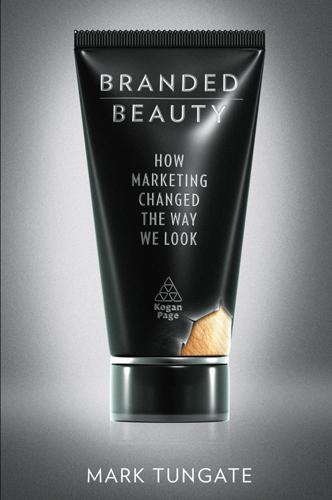
Branded Beauty
by
Mark Tungate
Published 11 Feb 2012
In fact, we share our research with the other brands within the LVMH group, such as Guerlain, Givenchy and Kenzo, thanks to our laboratories in Saint Jean de Braye. We have 260 researchers, which may seem quite a small number compared to the likes of L’Oréal, but we also work with exterior partners, such as Stanford’s Institute for Stem Cell Biology and Regenerative Medicine.’ Stem cell research has proved fertile terrain for skincare marketers. As stem cells have the power to renew themselves, the theory is that epidermal stem cells should be protected – or even boosted – in order to ensure that they do their job of keeping our skin looking fresh and radiant with maximum efficiency.
…
In 2009, with a team of supporters, he set up the SENS Foundation (www.sens.org). This is a registered charity that ‘works to develop, promote and ensure widespread access to rejuvenation biotechnologies which comprehensively address the disabilities and diseases of aging’ – in other words, regenerative medicine that repairs the wear and tear that causes us to grow old. The Foundation backs a network of students and researchers. SENS is an acronym for Strategies for Engineered Negligible Senescence. It proposes directly targeting the causes of ageing – de Grey has identified seven of them, including cell loss, cell atrophy and mutations of the nuclear DNA that lead to cancer – in the hope of systematically wiping them out.
…
What we have left at this point is the skeleton, skin, sex organs, sensory organs, mouth and upper esophagus, and brain.’ (‘Futurist Ray Kurzweil pulls out all the stops – and pills – to live to witness the singularity’, Wired, 24 March 2008) Immortality, then, is to be found in the overlap of the theories proposed by de Grey and Kurzweil. Regenerative medicine will allow each and every one of us to reach the ripe old age of Jeanne Calment, by which time we’ll be able to radically improve our bodies using technology. Or at least some of us will. The theory also raises the spectre of a wealthy elite of supercharged immortals lording it over a bunch of obsolescent serfs.
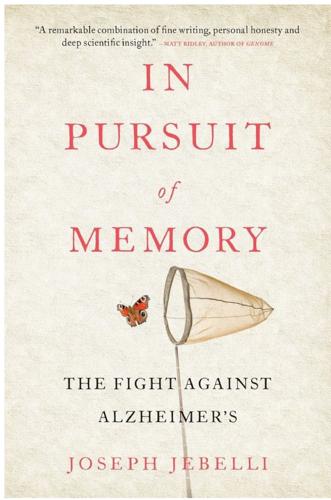
In Pursuit of Memory: The Fight Against Alzheimer's
by
Joseph Jebelli
Published 30 Oct 2017
Depressed and exhausted, Yamanaka considered quitting science altogether. But then a major event rescued him. In 1998 a developmental biologist at the University of Wisconsin, Madison, named James Thomson, isolated the first human embryonic stem cells–the primordial material that creates an entire human being.2 With that, a new branch of medicine, regenerative medicine, was born. Suddenly, the treatment for virtually every human disease that involved cellular and tissue deterioration was reimagined. Researchers around the world became gripped by the idea of growing made-to-order cells in a petri dish for human transplants: cardiac myocytes for heart failure, motor neurons for spinal cord injury, islet cells for diabetes, photoreceptors for blindness, and cortical neurons for Alzheimer’s.
…
Instead, they were quietly churning out the protein BDNF (brain-derived neurotrophic factor), which alone was enough to boost synapse density in the hippocampus by 67 per cent. Still, Wray’s concerns are echoed by many in the field. On 6 November 2014 stem cell biologists from all over the world amassed in Durham, North Carolina, for a conference titled, ‘Accelerating the cure for Alzheimer’s disease through regenerative medicine’. The topic under discussion was whether stem cells–both iPS and embryonic–are ready to enter clinical trials as transplants. The audience included delegates from biotech and Big Pharma, as well as senior academics. And feelings were mixed. Some said the technology was still a long way from being safe, let alone effective.
…
As one expert told Nature’s Megan Scudellari in June 2016: ‘The world is watching…’15 For evidence that even more incredible feats of regeneration are being pursued, one need look no further than the morbid and fascinating events that unfolded in California in the spring of 2012. 15 Young Blood And so we remained till the red of the dawn began to fall through the snow gloom. I was desolate and afraid, and full of woe and terror. But when that beautiful sun began to climb the horizon life was to me again. Bram Stoker, Dracula IN 1956, HALF a century before Yamanaka’s work galvanised the concept of regenerative medicine, a gerontologist at Cornell University called Clive McCay performed a ghoulish experiment. Using small scissors and surgical sutures, he stitched together pairs of rats–one young and one old–making their circulatory systems unite.1 It was called parabiosis (from the Greek para, meaning ‘alongside’, and bios, for ‘life’), and was done to investigate ‘the possibility,’ he wrote, ‘of reversing the pathological changes in an old animal by bathing its tissue in the blood of a young one’.
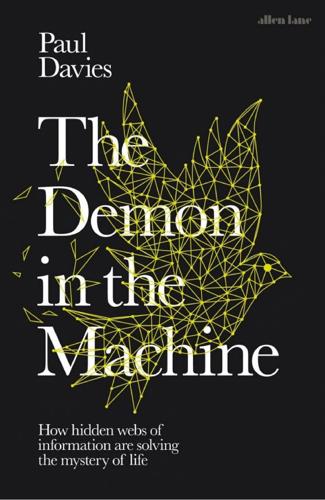
The Demon in the Machine: How Hidden Webs of Information Are Finally Solving the Mystery of Life
by
Paul Davies
Published 31 Jan 2019
Morokuma et al., ‘Planarian regeneration in space: persistent anatomical, behavioral and bacteriological changes induced by space travel’, Regeneration, vol. 4, 85–102 (2017); https://doi.org/10.1002/reg2.79. 6. Michael Levin, ‘The wisdom of the body: future techniques and approaches to morphogenetic fields in regenerative medicine, developmental biology and cancer’, Regenerative Medicine, 6 (6), 667–73 (2011). 7. Ibid. 8. Recent experiments have demonstrated that a whole range of genes may be activated according to the shape of the cells’ surroundings. This was demonstrated by incarcerating human stem cells in tiny cylinders, cubes, triangles, and so on.
…
Although not yet understood mechanistically, regeneration ceases when precisely the right size structure has been rebuilt, indicating a coordination of local growth with the size and scale of the host.7 Understanding the growth of complex forms in biology has enormous medical implications, ranging from birth defects to cancer. If these forms are mediated at least in part by electric patterning, or indeed by any encoding that we can learn to rewrite (and let cells build to specification), there is scope for correcting and controlling pathologies. The holy grail of regenerative medicine is to be able to regrow entire organs. The human liver will in fact regrow to its normal size following surgical resectioning. Again, how it knows the final shape and size is puzzling. If similar regeneration could be extended to nerves, cranio-facial tissue and even limbs, the applications would be stupendous.
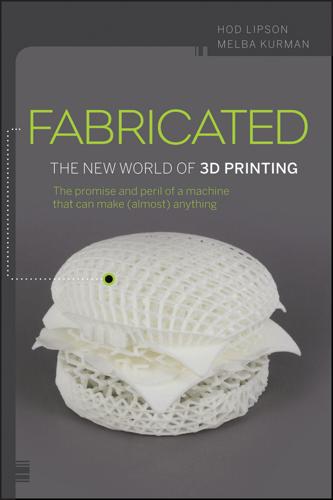
Fabricated: The New World of 3D Printing
by
Hod Lipson
and
Melba Kurman
Published 20 Nov 2012
The “kidney printing” was actually a lab experiment involving the 3D printing of kidney-like tissue that was capable of filtering blood and diluting urine. Atala’s TED demonstration had the effect of raising peoples’ awareness of the possibilities inherent in 3D printing body parts. Atala, long an evangelist of regenerative medicine and one of the pioneering researchers of bioprinting, remains optimistic. In an interview with a newsletter from a major financial firm, Atala said that “there is no question that someday, perhaps in the span of a generation, you can have a heart made out of your own cell tissue. Isn't that amazing?”
…
In the future, the notion of bionic body parts will seem crude—prone to malfunction, poor fit, and unable to evolve—similar to the limitations of today’s artificial replacement hips and knees. In the future, bionic parts will be replaced by custom-designed 3D printed tissue. If plastic is the favored raw printing material in industry, stem cells will be the favored raw material of bioprinting. The more regenerative medicine advances, the more it comes back to nature. The future of tissue engineering lies in 3D printing stem cells into precise configurations and letting them do the work growing the living tissue. Stem cells are the raw clay of the human body and are much more skillful at making body parts than we are.
…
Similar to the bioreactor-inflicted pounding required to process cartilage from petri dish into mature tissue, a highly vascularized body part—even if it were possible to print one—can’t just be popped directly into the body—it needs to grow in. New arteries and veins must knit themselves into existing arteries and veins. James Yoo, a professor at the Institute for Regenerative Medicine at Wake Forest University, described the challenge, “How can we create and connect those tissues produced outside the body? Whatever you put in the body has to be connected with the body's blood vessels, blood supply and oxygen. That’s one of the challenges we’ll face with larger tissues.” The biotech researchers of the future are already working on solutions.
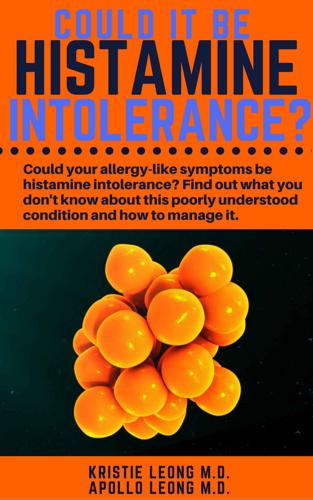
Could It Be Histamine Intolerance?: Could Your Allergy-Like Symptoms Be Histamine Intolerance?
by
Kristie Leong M. D.
and
Apollo Leong M. D.
Published 14 Jun 2017
They have a better understanding of this condition than traditional physicians do. If you don’t, you should be able to control your symptoms by changing your diet. Best of luck to you! References: Neuroscience. 2nd edition. Purves D, Augustine GJ, Fitzpatrick D, et al., editors. Sunderland (MA): Sinauer Associates; 2001. Regenerative Medicine. “The Function of Histamine” Dtsch Arztebl 2006; 103(51–52): A 3477–83. Am J Clin Nutr May 2007. Vol. 85 no. 5 1185-1196. ISRN Allergy. Volume 2011 (2011), Article ID 353045, 5 pages. http://dx.doi.org/10.5402/2011/353045 Gastroenterol Hepatol (N Y). 2007 Feb; 3(2): 112–122. Front Syst Neurosci. 2014; 8: 64.

Augmented: Life in the Smart Lane
by
Brett King
Published 5 May 2016
Another trend theorised was the addition of crocodile haemoglobin to grant CO2 tolerance for a partially terraformed red planet that was still poor in oxygen. Advances in synthetic biology will likely result in production facilities making novel treatments and diagnostics agents. Advances in regenerative medicine almost certainly will parallel these developments in diagnostic and treatment protocols. For example, replacement organs, such as kidneys and livers, could be developed by 2030. 3D Bioprinting As discussed in chapter 2, 3D printers have the potential for some incredible applications in the way we manufacture products, even at home, in the future.
…
However, one specific application of 3D printing that holds huge promise in the field of medicine is bioprinting. Bioprinting in its simplest form is using a 3D printer to “print” an organ, bone or muscle tissue to replace damaged parts of your body. One of the more exciting applications is being applied to regenerative medicine to address the need for tissues and organs suitable for transplantation. 3D printing has already been used widely in facial reconstruction surgery. Figure 5.11: 3D-printed “bone” is commonly used in facial reconstruction surgery. (Credit: Osteofab) Compared with non-biological printing, 3D bioprinting involves additional complexities, such as the choice of materials, cell types, growth and differentiation factors, and technical challenges related to the sensitivities of living cells and tissue and vasculature construction.
…
The scaffold was designed to degrade as the bladder tissue integrated with the body. Testing showed that the engineered bladders functioned as well as bladders that are repaired with intestine tissue, but with none of the side effects. Today, the patients are all still doing well. Other candidates for regenerative medicine and 3D-printed organ replacement are organs like the thyroid, kidney and liver. Atala was able to create mini “hearts”, about 0.25 millimetres in size, by reprogramming human skin cells into heart cells, which were then clumped together in a cell culture. A 3D printer was then used to give them the desired shape and size.

The Human Age: The World Shaped by Us
by
Diane Ackerman
Published 9 Sep 2014
Long open sunlit rooms, running the length of each floor, share common lounges, corridors, and microscope areas, making it impossible not to bump into postdocs in related fields. Even in winter, cross-pollination is encouraged. Just as the planners hoped, many collaborations have ensued, the new field of regenerative medicine is taking wing, and bioprintmakers are crafting tailor-made body parts. The principle of “regenerative medicine” is magically simple: if a heart or jaw is damaged, either teach the body to regrow another or print a healthy new one the body will embrace. What Bonassar’s lab regenerates is the body’s vital infrastructure of cartilage: all those cushions (the so-called disks) between the vertebrae in the spine; the easily torn meniscus in the knee; the accordion of semicircular rings that keeps the trachea from collapsing when we breathe, yet allows it to bend forward when we swallow; the external ear, prized by poets and nibblesome lovers, who often describe it as “shell-like.”
…
Moreau, The (Wells), 267–68 Israel, 76 Istanbul, Turkey, 78 Italy, 88, 107 Ithaa Restaurant, 76 Ivanpah, 106 Ivins, Molly, 206 Jaguar Corridor, 123 Jamaica Bay, 119 Jamaican fruit bats, 131 Japan, 88 industrial tourism in, 23 Japan beetles, 295 Japanese honeysuckle, 132 Jarrell, Randall, 45 jellyfish, 65, 181 Jernhusen, 96–97, 98 Jerusalem, 77 Jet Propulsion Laboratory, 220 Jim River, Alaska, 40 Johansson, Klas, 96–97 Johns Hopkins University, 244 Jordan, Terry, 31–32 Jungle Waterfalls, 83 Kahn, Peter H., 196 Kalmar, Sweden, 99–100 kangaroo, 296 Kanzi (bonobo), 202 Katrina, Hurricane, 46 katydids, 173–74 Kawasaki, Japan, 23 Keating, Tim, 147 kelp, 56, 57, 58, 60, 63–64 biofuels from, 64 Kenya, 124 Khoshnevis, Behrokh, 235 Kidd, Captain, 58 kidney, 239 King, Ross, 221 Kiribati, 49 knapweed, 166 knife fish, 147–48 Knights of the Order of the Barrier, 51 koalas, 164 Kockums, 101 Kojo Moe (Ohyama), 23 Korup National Park, 126 krill, 134 Kublai Khan, 272 Kubrick, Stanley, 269 kudzu vine, 132 Kungsbrohuset office building, 96 Kurzweil, Ray, 181, 218 Lactobacillus johnsonii, 301 Lafferty, Kevin, 299 Lake Cayuga, 30–31 Lamarck, Jean-Baptiste, 276–77 Lammens, Kathy, 302 lampreys, 132 Lancet, 277, 278 landscapes, 22–23 manufactured, 23–25 language, 7, 10, 171, 191, 255, 303 of animals, 201–3 Language Research Center, 201–2 Larry (boa), 130 lead, 271 Leadership in Energy and Environmental Design (LEED), 88 Leaves of Grass (Whitman), 184 Lederberg, Joshua, 289 LED lights, 90, 103–4 Leeuwenhoek, Antonie van, 290 Leno, Jay, 235 leopards, 118 leucine, 179 Library of Congress, 59 lifespan, 13 lights, 17 Lincoln Memorial, 59 Lindholm, Bosse, 100 Linnaeus, Carl, 217 lions, 164, 273 Lipson, Hod, 208–25, 226–27, 229, 235, 247, 250 livers, 150, 248 Living Machines Conference, 218–19 local farms, 88 Lockheed Martin, 236 locusts, 41 London, 50–51 London Zoo, 159 Long Island Sound, 60 loosestrife, 132 Losiny Ostrov National Park, 78 lotusin, 91 Louisiana, 46 Louv, Richard, 196 lungs, 239, 248 Lyme disease, 121 Lyme ticks, 39 lynxes, 132 macaws, 164 Maeslantkering, 50 magnolias, 111–12 magpies, 217 Mail Online, 271 malaria, 302 Malaysia, 79 Maldives, 76–77 mallards, 117 Mall of America, 96 Mandarin Chinese, 281 mantis shrimp, 61 manufactured landscapes, 23–25 manufacturing, 12 mariculture, 56–67 pushback against, 64–65 marigolds, 90 marine transport pollution, 76 Marshall Islands, 314 marsh rabbits, 129 Marsico, Ron, 119 Masdar City, Abu Dhabi, 103–4 Masters, Jeff, 47 mastodons, 31 Mayflower, 132 McDonough, William, 87–88 McGill University, 282, 284 McKibben, Bill, 112 McMurdo Station, 88–90 Meaney, Michael, 282–84 Mecanoo, 104 medical ecology, 300 medicine, 7, 12–13 Medieval Warm Period, 43 Mehler, Mark, 282 memories, 255 Men Who Stare at Goats, The (Ronson), 146 Mercedes, 236 mercury, 271 Mesopotamia, 235 metal alloy teeth, 253 methylation, 281 Mexico, 88 Mexico City, 77, 82–83 mice, 302 Michigan, 132 microbes, 287–304 effects of, on humans, 292, 295–303 evolution affected by, 292–93 microbiome, 289 microscope, 290 microtia, 244–45 Milky Way, 176 Milton, John, 51, 212–13 mining, 11, 21, 24, 34 mitochondria, 291 Mitsuku, 317 Mohali, India, 99 moist shaded zones, 79 Mojave Desert, 22, 106 Mongolia, 132 monkeys, 146, 267 monk parakeets, 131 monkshoods, 125 monsoon season, 51, 53 Montaigne, Michel de, 63 Montana, 117 Mooallem, Jon, 139–40 moon, 306 Moorea, 158 moor frogs, 124 moose, 132 Moscow, 78 MOSE Project, 50 mosquitoes, 302 Motherwell, Robert, 218 Motley Fool, 235 multiple sclerosis, 301 Mumbai, 78 musk oxen, 132 mussels, 58, 60, 66, 78 mussel tissue, 91 Muybridge, Eadweard, 191 Nakamura, Makoto, 238 Naki’o, 256 Namibia, 180–81 nanobots, 181 Nano Impacts Intellectual Community, 183 nanoparticles, 182–83 nanotechnology, 179–87 nanotubes, 179 NASA, 204, 235, 305, 314 Nasheed, Mohamed, 76 National Academy of Science, 266–67 National Arbor Day Foundation, 38 National Institutes of Health (NIH), 285 national parks, 165 National Resources Defense Council, 316 National Zoo, 123 NATO, 237 Natural History of the Senses, A (Ackerman), 175 nature: balance of, 132–33 romance with, 126–27 as term, 25, 111–27, 171–72, 309–10 Nature, 134 nature deficit disorder, 196–97 Nature Neuroscience, 282 Navigenics, 271 Navy, U.S., 145, 147 Nazis, 273–74 Neanderthals, 162, 178, 189, 263 nearsightedness, 192 Nelson Island, 48 Nemo, Blizzard, 58 Nestlé, 212 Netherlands, 101, 124, 132 Netherlands Antilles, 88 neural implants, 253 Nevada, 106 New Forest, 174–75 Newfoundland, 42 New Jersey, 46 New Mexico, 40 Newton, Isaac, 220 New York, 38, 46, 77 New York, N.Y., 55, 73 New York University, 197–98 night fiddlers, 172–73 Nile perch, 131 Nin, Anaïs, 186 nitrogen, 36 NOAA, 210 Norrbotten, Sweden, 275–76, 277–78, 280 North Africa, 106 North Carolina, 46 northern goshawks, 132 Northwest Passage, 135 Norway, 101, 124, 132 Norway maples, 132 nuclear bomb, 191 nuclear power, 22, 100 nuclear winter, 8, 9 Obama, Barack, 177 Obama administration, 233 obesity, 196 ocean, acidification of, 65, 66, 154 octopuses, 202, 216 Ohio, 77 Ohyama, Ken, 23 oil, 99, 106 oil refineries, 22 oil spills, 300 Oman, 132 1D farming, see mariculture Operation Acoustic Kitty, 146 Operation Migration, 139–40 opossums, 129 Orangutan Awareness program, 28 Orangutan Outreach, 5, 6, 313 orangutans, 3–7, 25–28, 132, 216, 217, 231, 296 human genes shared by, 3 impending extinction of, 27–28, 313 solitary lives of, 4 tool use by, 5 orca whales, 135, 144 orchids, 206 Orff, Kate, 55 organic fertilizer, 64 Organovo, 238–39 Ornstein, Len, 54 Orthopets, 256 Oshkosh Airshow, 187 osteoarthritis, 248 otters, 124 Outer Island, 58 ovarian cancer, 281–82 Överkalix, Sweden, 279–80 oxen, 140 oxeye daisies, 132 oxygen, 41, 53 oysters, 54–55, 56, 57, 60, 61–63 Ozawa, Masakatsu, 23 P-52 (python), 128 pacemakers, 253 Panbanisha (bonobo), 201–2, 203 pancreas, 281 pansies, 90 Papua New Guinea, 72 Paradise Lost (Milton), 212–13 Paris, 95–96 Paris Habitat, 96 Parkinson’s disease, 253, 295 parks, 73–74, 78 parrots, 202 parsley, 89 Partula, 156–59 passenger pigeons, 151–52 Pasteur, Louis, 290 Patagonia National Park, 99 pathogens, 290 peacock feathers, 91 Pearce, Mick, 93–94 Pembrey, Marcus, 279, 281 penguins, 134–35 peonies, 125 People’s Daily, 146 peppers, 89 peregrine falcons, 132 periwinkles, 61–62 permafrost, 48 personality, 200, 214, 216–17, 222–23, 229, 253, 292, 297, 299, 303–4, 307 Peru, 77 pesticides, 153, 166 pets, 149–50 Pettit, Don, 16 Phelps, Michael, 258 phenotypic elasticity, 249–50 Philippines, 46 photonic clusters, 35 phytoplankton, 61 piezoelectricity, 317 pigeons, 140, 142, 144, 145–46 pigs, 71 in war, 146 Pistorius, Oscar, 258, 260 Plan Bee, 166 planes, 171, 191 planets, 220–21 Planets, The: A Cosmic Pastoral (Ackerman), 220 plankton, 134–35 PlantLab, 90 plants: in cities, 79–85 texting by, 205–7 plastic stents, 253 Pleistocene Park, 151 Pliocene, 29 PLOS ONE, 271 pneumonia, 183 Poland, 78, 132, 273 polar bears, 134 polar molecules, 35 polar T3, 90 pollution, 154 marine transport, 76 Polo, Marco, 272 polymer teeth, 253 Polynesia, 156, 157 Ponce, Brent, 260–61 ponies, 137–38 Pons, Lily, 264 poppies, 125 population growth, 10 Porter, Eliot, 25 poverty, 285, 286 Power Felt, 185 prairie dogs, 131 presence, 199 Price of Freedom: Americans at War exhibit, 145 probiotics, 300 Proceedings of the National Academy of Sciences, 129 produce, 89 Project Orcon, 145 Project Pigeon, 145 Project X-Ray, 145 proprioception, 175–76 prosthetics, 256–58 protein, 190 protozoans, 172, 289–90, 300 Przewalski’s horses, 132 Puerto Rico, 175 Puppe (orangutan), 26–27 purple finch, 137 pyrolysis technology, 76 pythons, 128–31, 133, 140, 315 Quai Branly Museum, 80–82, 84–85 quarries, 24 quasi-crystal, 34 rabbits, 126, 129, 133 rabies, 298 racoons, 129 rail trails, 77 rainforests, 79 rains, 41 Raison, Charles, 300–301 Rambuteau subway station, 95–96 Rand, Ayn, 59 rats, 282–83, 296 reading, 191–92 Reconciliation Ecology, 74 recycling, 52, 74, 78, 87, 88, 90 heat, 95–108 red clover, 166 Red Delicious, 137 red foxes, 153 red kites, 132 Red Sea Star Restaurant, 76 reef death, 36–37 refrigerators, 87 regenerative medicine, 244 Rehabilitation Institute of Chicago, 254–55 reindeer, 132 Reiss, Diana, 202, 204 religion, 176 Relman, David, 300 Renaissance, 190 Renault, 83 renewable energy, 307 restaurant rooftop farms, 88 retinas, 253 Revolutionizing Prosthetics program, 258–59 Rezwan, Mohammed, 52–53 rhododendrons, 125 rice, 71 Rice Plant Conservation Science Center, 82 Rig Veda, 257 RinkWatch.org, 40, 314 Rio de Janeiro, Brazil, 78 Ripasso Energy, 100–101, 106 roadkill, 115–16 robomoths, 146–47 RobotCub Consortium, 218–19 robot fleas, 148 robotic evolution, 210, 213, 224–25 robots, 210–25 rocketships, 171 rock strata, 31, 35 roe deer, 124 Romania, 78, 124 Romans, 185 Rome, 267 Roosevelt, Franklin D., 145 rosemary, 90 Rosenzweig, Michael, 74 roses, 125 Rotterdam, Netherlands, 77 Royal Botanic Gardens, 118 Rwanda, 46 Ryu Chan Hyeon, 102 saber-tooth tigers, 162, 163 Sagan, Carl, 220 sage, 125 Sahara Desert, 54 Sahel, 46 St.

Ageless: The New Science of Getting Older Without Getting Old
by
Andrew Steele
Published 24 Dec 2020
‘Stem cells’ aren’t a single thing, nor are they some kind of elixir where a single treatment will fix many different diseases or undo the ravages of time systemically. In order to understand the huge, genuine potential of these therapies, we need to understand exactly what stem cells are, and therefore what we can expect them to do. Getting the right cells to the right place at the right time is key to using them for regenerative medicine. The definition of a stem cell is a cell which has a choice when it divides: it can either do what most cells do when they divide, and form two of the same kind of cell (which in this case would be two stem cells, used for replenishing the stem cell population), it can divide into a stem cell and another kind of cell (thus not depleting the stem cell population, and adding a fresh, new cell to wherever it finds itself, from the skin to the lining of the intestines), or it can turn into two non-stem cells (to maximise tissue replenishment at the expense of the stem cell population).
…
The lymph nodes are where a new threat is matched to the immune cells that are best equipped to fight it, meaning that new T cells need functioning lymph nodes to properly mature, and their age-related decline inhibits our immune defences, too. Studies show that the immune system is only as strong as its weakest link, and a revitalised thymus might not be enough to mount a strong immune response if the lymph nodes aren’t in good shape. Regenerative medicine for our lymphatic system is under development, but it’s at an earlier stage than work on the thymus and could do with some extra attention. As well as looking at the training grounds of the immune system, we’ll also need to look at their graduates. Cells of the adaptive immune system can be some of the oldest cells in the body – the ‘memory’ T and B cells which stick around after an infection, ready to deploy their knowledge of a familiar foe should it return, can survive for years or even decades.
…
Crowell and L. A. Maynard, ‘The effect of retarded growth upon the length of life span and upon the ultimate body size’, J. Nutr. 10, 63–79 (1935). DOI: 10.1093/jn/10.1.63 ageless.link/ovmys4 … diversity of life on Earth … This fun and accessibly written article explores some ways, from ageing to regenerative medicine, that animals can inform biomedical science. João Pedro de Magalhães, ‘The big, the bad and the ugly: Extreme animals as inspiration for biomedical research’, EMBO Rep. 16, 771–6 (2015). DOI: 10.15252/embr.201540606 ageless.link/qjy7oo In 2011 … and extend lifespan Darren J. Baker et al., ‘Clearance of p16Ink4a-positive senescent cells delays ageing-associated disorders’, Nature 479, 232–6 (2011).

The Transhumanist Reader
by
Max More
and
Natasha Vita-More
Published 4 Mar 2013
Even so, certain technologies and areas of current and projected future technological development clearly are especially relevant to transhumanist goals. These include information technology, computer science and engineering, cognitive science and the neurosciences, neural-computer interface research, materials science, artificial intelligence, the array of sciences and technologies involved in regenerative medicine and life extension, genetic engineering, and nanotechnology. A genuine understanding of the goals and potentials of transhumanism requires taking an interdisciplinary view, integrating the physical and social sciences. The first fully developed transhumanist philosophy was defined by the Principles of Extropy, the first version of which was published in 1990.
…
Such observation is not intended to reduce the scholarship of Huxley in relation to transhumanism, but to clear up misconceptions that that Huxley coined the philosophy of transhumanism (Vita-More 1994). 3 In this essay, human enhancement means improving physical performance, increasing cognitive abilities, and radically extending human lifespan. Human enhancement technologies include biotechnology, nanotechnology, information technology, and cognitive and neuro sciences. The most referred to methods for enhancement include regenerative medicine, nanomedicine, and brain preservation. 4 Primarily as suggested by Manfred Clynes and Nathan Kline in “Cyborgs and Space” (1960) and tangentially as suggested by Donna Haraway in Simians, Cyborgs, and Women: The Reinvention of Nature (Haraway 1990). 5 As suggested in The Prosthetic Impulse: From a Posthuman Present to a Biocultural Future (Smith and Morra 2007). 6 Primarily as understood by transhumanists as a stage of human transformation, succeeding transhuman, and tangentially as suggested in How We Became Posthuman: Virtual Bodies in Cybernetics, Literature, and Informatics (Hayles 1999). 7 As understood by Randal Koene as “whole brain emulation” and more recently “substrate-independent minds.” http://www.kurzweilai.net/pattern-survival-versus-gene-survival. 8 Life expansion means increasing the length of time a person is alive and diversifying the matter in which a person exists (Vita-More 1997 [revised 2011]). 9 “Transcentury UPdate,” a cable public TV show aired in Los Angeles and Telluride, Colorado, from 1986 through 1993, and broadcast numerous segments on the political and ethical issues of technology and segments on building scenarios for the global distribution of technology (green energy etc.), the latter largely based on Buckminster Fuller’s distribution plan (Fuller 1982).
…
The idea of a symbiogenesis is an underlying theme of life expansion,8 in relation to a “biotechnogenesis”9 of emerging and speculative technologies, which form the media of life expansion. The biotechnogenesis media of life expansion for the human and transhuman include biotechnology (genetic engineering, and methods of regenerative medicine, i.e., stem cell cloning and regenerative cells growing organs), nanotechnology (nanomedicine, nanorobotics, and molecular manufacturing) and human–computer interaction, including artificial intelligence (artificial general intelligence), and processes for whole brain emulation. The quintessence of being alive – that element of you, the psyche according to Aristotle, form the biotechnogenesis of matter as they repeatedly collapse and expand into each other.
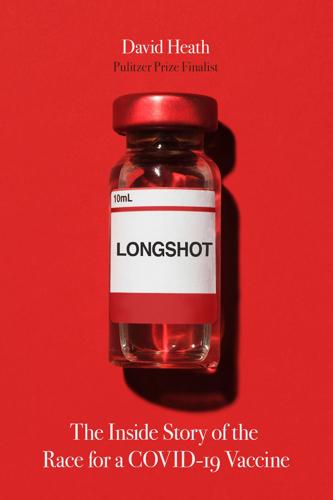
Longshot
by
David Heath
Published 18 Jan 2022
Yamanaka was describing a discovery that might allow scientists to take cells from one part of the body, such as the skin, and convert them back to embryonic cells. Then, these cells could be coaxed into becoming an entirely different type of cell. Skin becomes bone marrow or maybe even a kidney. “From the point of view of moving biomedicine and regenerative medicine faster, this is about as big a deal as you could imagine,” Irving Weissman, a leading stem cell biologist at Stanford University, told the New York Times.4 Yamanaka discovery of so-called induced pluripotent stem cells—IPS cells for short—had almost surrealist implications for future transplant patients, whose lives often depend on waiting for a perfect donor.
…
However, due to a series of very strange and very extraordinary events (outside the domain of the science in the paper, and outside of the peer review process), publication of our story has been held up, and the editor has requested that we conduct additional experiments. As I said, the circumstances surrounding this decision are highly unusual. However, as many of you would agree, our study may be very important as it has the potential to transform multiple fields (including, and beyond, regenerative medicine). Considering the potential significance of this study, I think it in the best interests of the study to get these experiments done and then go to press.” Rossi had no choice but to let Warren know as well. As Warren recalls, “He said there’s been an unwholesome development. A whistleblower had said this can’t be replicated.

Homo Deus: A Brief History of Tomorrow
by
Yuval Noah Harari
Published 1 Mar 2015
Yet Thiel is somebody to be taken very seriously. He is one of the most successful and influential entrepreneurs in Silicon Valley with a private fortune estimated at $2.2 billion.28 The writing is on the wall: equality is out – immortality is in. The breakneck development of fields such as genetic engineering, regenerative medicine and nanotechnology fosters ever more optimistic prophecies. Some experts believe that humans will overcome death by 2200, others say 2100. Kurzweil and de Grey are even more sanguine. They maintain that anyone possessing a healthy body and a healthy bank account in 2050 will have a serious shot at immortality by cheating death a decade at a time.
…
Islamic fundamentalists may repeat the mantra that ‘Islam is the answer’, but religions that lose touch with the technological realities of the day lose their ability even to understand the questions being asked. What will happen to the job market once artificial intelligence outperforms humans in most cognitive tasks? What will be the political impact of a massive new class of economically useless people? What will happen to relationships, families and pension funds when nanotechnology and regenerative medicine turn eighty into the new fifty? What will happen to human society when biotechnology enables us to have designer babies, and to open unprecedented gaps between rich and poor? You will not find the answers to any of these questions in the Qur’an or sharia law, nor in the Bible or in the Confucian Analects, because nobody in the medieval Middle East or in ancient China knew much about computers, genetics or nanotechnology.
…
Even the managers in charge of all these activities can be replaced. Thanks to its powerful algorithms, Uber can manage millions of taxi drivers with only a handful of humans. Most of the commands are given by the algorithms without any need of human supervision.16 In May 2014 Deep Knowledge Ventures – a Hong Kong venture-capital firm specialising in regenerative medicine – broke new ground by appointing an algorithm called VITAL to its board. VITAL makes investment recommendations by analysing huge amounts of data on the financial situation, clinical trials and intellectual property of prospective companies. Like the other five board members, the algorithm gets to vote on whether the firm makes an investment in a specific company or not.
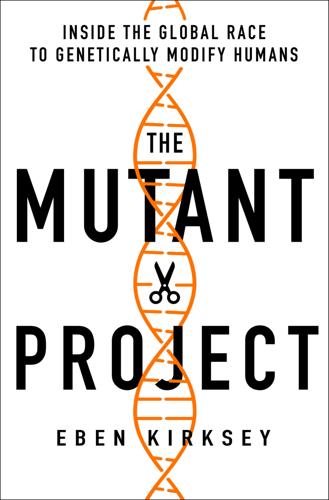
The Mutant Project: Inside the Global Race to Genetically Modify Humans
by
Eben Kirksey
Published 10 Nov 2020
Philosophers debated fundamental ethical issues: should we have absolute liberty when it comes to choosing the genetic makeup of our offspring, or should society proceed with caution as we think about the rights of the unborn child? When a balding Washington insider, Michael Werner from the Alliance for Regenerative Medicine, took a turn at the microphone, it became clear that privately funded research was already proceeding at breakneck speed. Werner said he represented 230 companies and organizations, “many of whom are using or developing gene-editing technologies.” He was a corporate lobbyist dressed in a dark suit, white button-down shirt, understated necktie, gold wedding band.
…
,” accessed March 12, 2020, https://www.bgi.com/. 4: WINNER TAKES ALL 1 Nicholas Wade, “Scientists Seek Ban on Method of Editing the Human Genome,” New York Times, March 19, 2015. 2 Renée C. Fox and Judith P. Swazey, “Medical Morality Is Not Bioethics,” Perspectives in Biology and Medicine 27, no. 3 (1984): 336–60. 3 Alliance for Regenerative Medicine, “Members and Profiles,” accessed March 12, 2020, http://alliancerm.org/members/members-and-profiles. 4 “Easy DNA Editing Will Remake the World. Buckle Up,” Wired, August 2015. 5 Cory Renauer, “Vertex Pharmaceuticals’ $2.6 Billion Bet on CRISPR,” The Motley Fool, November 7, 2015. 6 See sEben Kirksey, Brandon Costelloe-Kuehn, and Dorion Sagan, “Life in the Age of Biotechnology,” in The Multispecies Salon, edited by Eben Kirksey (Durham, NC: Duke University Press, 2014), 185–220. 7 Adam Zaretsky, “The GloFish Freedom and Reconciliation Project,” TDR: The Drama Review 54 (2010): 2–3. 8 Britt Wray, Rise of the Necrofauna (Vancouver: Greystone Books, 2017). 9 Daniel J.
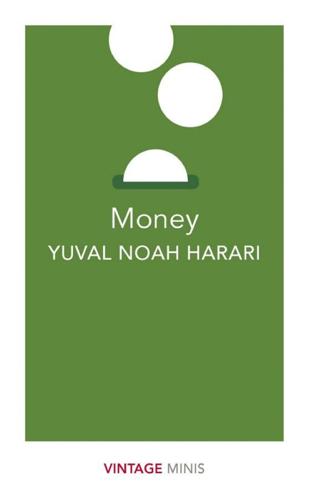
Money: Vintage Minis
by
Yuval Noah Harari
Published 5 Apr 2018
Even the managers in charge of all these activities can be replaced. Thanks to its powerful algorithms, Uber can manage millions of taxi drivers with only a handful of humans. Most of the commands are given by the algorithms without any need of human supervision. In May 2014 Deep Knowledge Ventures – a Hong Kong venture-capital firm specialising in regenerative medicine – broke new ground by appointing an algorithm named VITAL to its board. Like the other five board members, VITAL gets to vote on whether or not the firm invests in a specific company, basing its opinions on a meticulous analysis of huge amounts of data. Examining VITAL’s record so far, it seems that it has already picked up at least one managerial vice: nepotism.

An Optimist's Tour of the Future
by
Mark Stevenson
Published 4 Dec 2010
.* Castillo isn’t the only person wandering around with a stem cell-grown body part. Kaitlyne McNamara’s doctors isolated healthy adult stem cells from the diseased bladder she was born with and used them to grow an entire, fully functioning (and healthy) replacement, which they then implanted. The Wake Forest Institute for Regenerative Medicine in Winton-Salem, North Carolina are working on more than twenty different organs and tissues including kidneys, livers, retinas and muscle. Doris Taylor, Harold Ott and colleagues at the Centre for Cardiovascular Repair at the University of Minnesota took the collagen shell of a rat’s heart, sprayed it with stem cells and it started beating.
…
Daniel 160, 164 Hitchhiker’s Guide to the Galaxy, The 100 Hoek, Eric 118 Hofmeister, Anke 261–2 Hofstadter, Douglas 276 Holbrook 221–2, 239–40 Huggable 78 Human Security Brief 148 Huntington’s disease 44, 58 Huxley, Julian 13 I IBM 113, 125 identical twins 43 Imperial College London 31, 213 indium 195–6 Industrial Revolution 110, 115, 167, 171, 284–5 inequality 302 influenza virus 64–5, 69–70 Insomnia Cookies 93–4 Institute for Health Metrics and Evaluation 149 Institute of Bioengineering and Nanotechnology 69 Intelligent, Safe and Smart Built (ISSB) 119 interconnectedness Internet 151–8 nonzero-sum game 149–51 telegraph 145–7 and violent deaths 149 Intergovernmental Panel on Climate Change (IPCC) 171, 172, 179, 180 International Association Synthetic Biology 68 International Gene Synthesis Consortium 68 Internet 147, 151–64, 268, 302 invariants 99 Iran 157 Isasi, Rosario 27 IVF 106 J Jackson, Ron 64 Jones, Richard 120–1, 124, 130 Joule Biotechnologies 57, 186–8, 189 JSB see Brown, John Seely Jungerbluth, Philip 20 Jurassic Park 39, 75 K Kahn, Bob 153, 159 Kármán line 133 Kasparov, Garry 82, 83, 86 Katter, Bob 171 Keeley, Lawrence 147 Keeling, Charles David 167 Keith, David 184 Kelly, Kevin 161 Kench, Paul 242 Kessler, Andy 43 Klein, Naomi 303 Kleinrock, Leonard 152 Kline, Charley 152 Knome 50 Konarka 190–1, 196–204, 206, 224, 295, 299 Kossel, Albrecht 37 Krummel, Glen 228 Kukla, George 178–9, 186 Kunfunadhoo Island 261–2, 266 Kurzweil, Ray 90, 267–78, 282, 293, 299, 303–4 and Brown, John Seely 285 posthumans 103–4, 268 The Singularity 88 transhumanism 21–2, 267–8 Kyrgyzstan 157 L Lackner, Klaus 173, 174–86, 188, 189, 259–60, 299, 301 Lana 224–5 Langley, Tim 212–19 Law of Accelerating Returns 51, 270–8, 293 Leber’s congenital amaurosis (LCA) 59–60 Legion of Extraordinary Dancers 155, 158, 294 Lehmann, Johannes 209–10 Leo 73–4, 75–6, 79, 80–2, 84–6, 102 Lewis, Dan 203 Licht, Stuart 184 life expectancy 12–13, 301 and income 27–8 longevity escape velocity 29–30 limited liability corporations 290–1 Lincoln, Abraham 265–6 Lipson, Hod 92, 94–6, 98–101, 102, 210, 272–3, 293, 299 longevity escape velocity 29–30 López, José 117 Lovell, Tony 222–40, 300 Lovelock, James 164, 172, 220 biochar 208–9, 210, 215 LS9 56–7, 61 Lynx spaceplane 142 M Maahlos 261 McConnell, James 17 MacDiarmid, Alan 196 ‘Machine Stops, The’ (Forster) 161 McNamara, Kaitlyne 20–1 Maes, Pattie 162–3 Maldives 241–62 Malé 249–50 Malthus, Thomas Robert 250 ‘Manchester Report, The’ 223, 224 Markram, Henry 90, 91 Martine, George 252–3 Masten Space Systems 136 Matrix, The 103 men life expectancy 12, 23 pregnancy 24 methane 230 Methuselah Foundation 21 Mexico 278–9 Miescher, Johannes Friedrich 37 Miller, Webb 41 Minsky, Marvin 102, 104 Miromatrix Medical 20 MIT 40, 262 Fluid Interfaces Group 162–3 Media Lab 77–8 nanotechnology 201 Smart Cities Group 200 Technology Review 16, 187 Mitchell, Bill 200 Mojave 131–3, 135–44 Monbiot, George 215, 303 Moombril 221–2, 239–40 Moore, Michael 303 Moorhead, Paul 18 Moravec, Hans 74, 84, 89–90 Morgan Stanley 193 Mosely, Andrew 231–5 Mosely, Megan 231–5 Mouchot, Augustin 192–3, 266 mousepox 63–4 Musk, Elon 136, 141 Myhrvold, Nathan 16 N Najning University 120 nanofactories 114–17, 125–6, 286 Nanoforum 120 nanoparticles 287 nanopunk 117 Nanosolar 202–3 Nanosystems (Drexler) 112, 124 nanotechnology 107, 108–30, 268, 301, 302 apocalypse 125–7 and energy 201 Grey Goo 121–3 products 117–21 Narrandera 237–8 NASA 134, 135, 136, 141, 170 Nasheed, Mohamed 243–9, 254–60, 262 National Academy of Engineering 125 National Academy of Sciences 125 National Center for Atmospheric Research 176 National Center for Biotechnology Information (NCBI) 64–5 National Human Genome Research Institute 36 National Research Council 125 National Science Advisory Board for Biosecurity 67–8 natural language 86–7 Nature 170 Near-Earth Asteroid Rendezvous (NEAR) 134 New Scientist 68 New York 172 New York University 120 New Zealand 206–20 New Zealand Wind Farms 208 Nexi 102 Niven, Larry 135 nonzero-sum games 149–51, 153–4, 270 Northwest Passage 177–8 Nouri, Ali 65 nuclein 37 O oil 193 Olovnikov, Alexey 52–3 Olshansky, Stuart Jay 12 oncogenes 46–7 optical telegraph 145–6 Optimist (cocktail) 220 organic conductive polymers 196–7, 198, 201 ornithine transcarbamylase deficiency 58–9 Ott, Harold 20 over-population 17–18 P Pakistan 157 Pan Am 133 parabolic surfaces 192 Parkinson’s disease 273–4 Partners in Health (PIH) 202 Personal Genome Project (PGP) 37, 42–3, 47–50, 51, 273 Personal Robots Group 73–4, 75–6, 77–82, 84–6, 102 Pew Charitable Trusts 119 Pew Research Center 168 phenylketonuria 44, 58 Picton 214–15, 217–18, 220 Pifre, Abel 192 Pinatubo, Mount 169 Pinker, Steven 83, 147, 149, 293 Pirbright Laboratory 68 Pistorius, Oscar 29, 300 Pleasance, Erin 40–1 Polonator G.007 50 Pontin, James 16 Popular Science Monthly 192 population 17–18, 249–54 pornography 158 Portugal 234–5 Power Plastic 196–7, 198, 204, 224 Prey (Crichton) 122 procreative beneficence 23 Project on Emerging Nanotechnologies 119 proteins 45–6 ProtoLife 66 Pygmalion (Shaw) 86 pyrolysis 209–10, 212–14 R Ranchos de Taos, New Mexico 234 Rankin, Sarah 31 Rasmussen, Lars 256 Rebek, Julius 124 reflection 86 Regis, Ed 112 Reicher, Dan 194–5 Rema 199 Reporters Without Borders 157 Revue des Deux Mondes 192 Rice University 118–19, 201 Ridley, Matt 270, 302–3 Roberts, Lawrence 152 Roberts, Paul 244, 248, 254 Robinson, Ken 265–6, 284, 288, 293 robots 73–92, 302 Leo 73–4, 75–6, 79, 80–2, 84–6 Nexi 102 Starfish 95–6, 98–9 Rofecoxib 49 Rosenthal, Elisabeth 254 Rosling, Hans 251, 254, 293 Rothemund, Paul 119, 120 Ruddiman, William 230 Rumsfeld, Donald 172 Rutan, Dick 140–1, 142, 143 S Sanger Institute 40–1, 51 Saudi Arabia 157 Savory, Allan 221, 226–7, 232 Savulescu, Julian 23 scalable efficiency 286 Scaled Composites 136, 139, 142 Schmidt, Michael 98, 99, 273 Schöni, Peter 220 Schuster, Stephen 41 Schweizer, Erhard 113 scientific method 96–8 self-replication 121–3 senescence 18, 53–4 Shadow Robot Company 74–5 Sharkey, Noel 76–7 Sharpe, Tom 256 Shaw, George Bernard 86 Shawcross, Lord 215 Shew, Ashley 109–10 Shirakawa, Hideki 196 Shivdasani, Eva 261 Shivdasani, Sonu 261 Siemens 193 silicon cells 195–7 Singularity 88, 268 Singularity is Near, The 268, 269, 271 Six Million Dollar Man, The 14 SixthSense 162–3 Skordalakes, Emmanuel 52, 53 Smalley, Richard 111, 122, 123, 201 SmartHand 103 Smolker, Rachel 216 Snider, Wayne 200 Socrates 96–7, 99 soil carbon 228–31, 233–5, 236–7, 238 soil charcoal 213–14 solar energy 190–1, 192–3, 194–205, 206, 274, 295, 302 Solar Thermal Electrochemical Photo Carbon Capture 184 Solarbuzz 205 Soneva Fushi 261–2 space 133–44, 302 Space Frontier Foundation 134 SpaceShipOne 135–6 SpaceShipTwo 136, 139, 142 SpaceX 136, 141 Sparrow, Rob 23–4 Speedy, Barb 218 Spielberg, Steven 75 Stan Winston Studio 75 Standage, Tom 146–7 Stanford University 20 Star Wars 76, 83, 102 Starfish 95–6, 98–9 Stark, Philip 158 Stellenbosch University 118 stem cells 19–21, 31, 301 Stiehl, Dan 78–9 Stoppard, Tom 281 Strong, Graham 237–8 StubbyGlove 228 Suel, Gurol 273 Suh, Yousin 53 Sun Tzu 40–1, 51–2 surveillance 127, 129 synthetic biology 55–8, 70 bacteria 56–8 bioterrorism 63–6, 68 control 66–70 genome engineering 60–3 viral gene therapy 58–60 Synthetic Genomics 56 Syria 157 Szostak, Jack 18 T Taylor, Doris 20 TED (Technology, Entertainment, Design) 14, 153, 265–6, 291–5 Tefera, Elfenesh 199 telegraph 145–7, 297, 301 tellurium 195–6 telomerase 18–19, 45, 52–4 Terminator, The 76, 78, 103, 302 Tetrahymena 18 Thornton, Edward 146 thymine 37–9, 46 Toffler, Alvin 289 Tofu 79 transhumanism 13–18, 21–34, 45, 52–4, 267–8 transplants 19–21 Treder, Mike 126–7 tribes 155–6 Tripathy, Sukant 199 truth 96–8 Tsiolkovsky, Konstantin 114, 116, 125, 128 Tufts Center for the Study of Drug Development 49 Tumlinson, Rick 133–4 Turing, Alan 88 Turkmenistan 157 Turney, Chris 213 twins 43 U underwater cabinet meeting 241–2, 245, 246–9, 258 Ungar, Georges 17 United Nations (UN) biosafety 68 Livestock’s Long Shadow 230 population 252 State of the World’s Forests 253 World Urbanisation Prospects 250 United States biofuels 187 carbon dioxide 184 electricity 285 global warming 168 oil 187, 188 science 279–80 space programme 134, 136 University of Bradford 149 University of Bristol 20 University of British Columbia 148 University of California 118–19 University of Maryland 201 University of Minnesota 20 University of Regensburg 125 University of Washington, Center for Conservation Biology 40 Uppsala University 148 Uzbekistan 157 V Venter, Craig 36, 47, 50, 56, 57, 58, 279 Vietnam 157 Vinsen, Mark 211–12 violence 147–51, 302 and interconnectedness 157–8 and Internet 244–5 and nanotechnology 126–7 Vioxx 49 viral gene therapy 58–60 Virgin Galactic 135–6, 141 vitrification 15 Voltaire 218 Voyager 140 W Wake Forest Institute for Regenerative Medicine 20 Wall-E 76 Ward, Bruce 222–40, 259, 300 wars 147–9 Watson, James 56 Web 154–5 Weitz, David 51 Weizenbaum, Joe 86 Weldon, Larry 190–1, 196–7 Wellcome Trust Sanger Institute 40–1, 51 Wemett, Tracy 190, 197, 204, 267, 276, 297 Wired 61, 112, 159 Witt, Stuart 137–40, 143, 144 women 23–4 Wonder, Stevie 269 wood gas 209 Woodrow Wilson International Center for Scholars 119 World Health Organisation 68, 69–70, 148, 149 World Transhumanist Association 25 worldchanging.com 158 Wright, Allen 179, 180 Wright, Burt 179, 180 Wright, Karen 224–5 Wright, Orville 132–3 Wright, Robert 149–51, 156, 158, 270, 293 Wright, Tim 224–5 Wright, Wilbur 132–3 X Xcel Energy 199, 200 XCOR Aerospace 136, 141–2 Y YouTube 155, 157, 294 Z Zhang, Jin 118 Zimbabwe 221, 226 Zittrain, Jonathan 153 Ziyad, Mohamed 254, 255–6 Zykov, Victor 95 * An interesting coda to Claudia’s story is that she nearly didn’t get her operation.
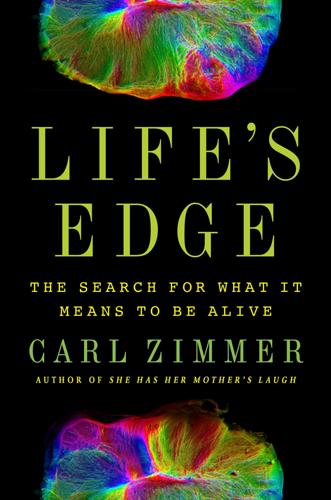
Life's Edge: The Search for What It Means to Be Alive
by
Carl Zimmer
Published 9 Mar 2021
North Torrey Pines Road cut north through La Jolla, California, alongside groves of looming tower cranes. With a stream of rush-hour traffic flowing by me, it was hard to remember the ribbon of wild coast tucked away close by. I crossed a eucalyptus-lined parking lot to get to the Sanford Consortium for Regenerative Medicine, a complex of glassed-in labs and offices. Once inside, I found my way to a third-floor laboratory, and there I met a scientist named Cleber Trujillo—Brazilian-born, with a close-cropped beard. Together we suited up in blue gloves and smocks. Trujillo led me to a windowless room banked with refrigerators, incubators, and microscopes.
…
See theology and religious beliefs reproduction and characteristics of life, 124, 130, 180 and hibernation, 98 and maple trees, 105–10 and organic molecules, 144–45 and sexual parasites, 213–15 and slime molds, 81 and viruses, 204–5, 208 and vitalism debate, 146 resurrectionists, 44–46 Rett syndrome, 7, 8 ribosomes, 196, 212 ribozymes, 232, 239, 243 Ritzko, Katelyn, 90–93, 97, 101 RNA and assembly theory, 292 and astrobiology/exobiology research, 262, 266 and autocatalytic sets, 286 and DNA-reading technology, 230 function in genetics, 196 life based on, 224–25, 232–34 and metabolic function, 72, 75 and origins of life theories, 217, 238–39, 242–44 and primitive cells, 227, 228 RNA-based drugs, 248–49 and viruses, 208, 225 Robb, Alfred Arthur, xvii Roe v. Wade, 24–25 Romanek, Christopher, 256 Rosen, Robert, 283 rotifers, 43–44, 46 Royal Society, xvi, 44–45, 133 Rubins, Kathleen, 242 Rudge, W. A. Douglas, xvi Russell, Michael, 245–48 Sagan, Carl, 253–54, 262 samaras, 107–9, 113 Sanford Consortium for Regenerative Medicine, 6 SARS-CoV-2 pandemic, 203–9, 226 Saturn, 260, 261 Schrieffer, Robert, 287 Schrödinger, Erwin, 187–91, 195, 262 Science, 257 Scientific American, 247 Scientific Revolution, 128 Scripps Research Institute, 285 seabed environment, 153–56 Search for Extraterrestrial Intelligence (SETI), 255, 259 Secor, Stephen, 67–70, 72–75, 77, 124 sensibility, 139–43 sex cells, 184–85 sexual parasitism, 213–15 sexual reproduction, 105–7 Shapiro, Ben, 25 Shelley, Mary, 147–49 Shewmon, Alan, 58 Siberia, 46 Simmel, Marianne, 267–68 siphonophores, 153 slime molds, 80–89, 105, 113, 124 Smith, Kelly, 272–73, 276 Smith College, 268 snakes, metabolism of, 67–77, 124 Snethlage, Cedric, 12 Société de Biologie, 45–46 somas, 3, 5 Soviet Union, 178 space travel, 47–48, 251.
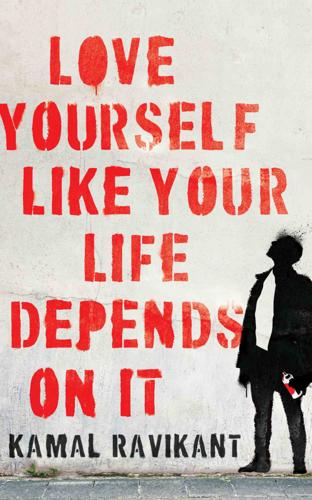
Love Yourself Like Your Life Depends on It
by
Kamal Ravikant
Published 7 Jan 2020
Just like workouts, it must be done consistently, perhaps for as long as I live. But so what? If this is the solution, it’s a damn good one. I am worth the magic that will result. LVI Time to grab the reins on my health. My friend who texted is putting together a program for me. But rather than waiting, I go visit Matt Cook, the best regenerative medicine physician in the country. Of all the doctors I saw last year, he’s the only one who got me results. We run through tests, showing that I’ve improved since I last saw him. Most importantly, my state of mind is proactive, rather than reactive. This helps with healing. While there, I end up chatting with Lisa, a kind nurse who works hard, making sure all the patients are comfortable.

Exponential: How Accelerating Technology Is Leaving Us Behind and What to Do About It
by
Azeem Azhar
Published 6 Sep 2021
Since the first 3D printers were developed by Charles Hull in the mid-1980s, additive manufacturing has improved dramatically. The process has become faster, more precise and more versatile – today, 3D printers can work with materials including plastics, steels, ceramics and even human proteins. In 1999, the Wake Forest Institute for Regenerative Medicine grew the first 3D printed organ for transplant surgery. And in Dubai in 2019, my friend Noah Raford spearheaded the then largest 3D-printed object: a single-storey 2,500-square-foot building.15 Printed out of concrete in 17 days, Noah used it as his office for several months. The project used 75 per cent less concrete than a typical design and was built with unheard-of precision.
…
Abu Dhabi, UAE, 250 Acemoglu, Daron, 139 Acorn Computers, 16, 21 Ada Lovelace Institute, 8 additive manufacturing, 43–4, 46, 48, 88, 166, 169, 175–9 Adidas, 176 advertising, 94, 112–13, 116, 117, 227–8 AdWords, 227 aeroponics, 171 Afghanistan, 38, 205 Africa, 177–8, 182–3 Aftenposten, 216 Age of Spiritual Machines, The (Kurzweil), 77 agglomeration, 181 Air Jordan sneakers, 102 Airbnb, 102, 188 aircraft, 49–50 Alexandria, Egypt, 180 AlexNet, 33 Algeciras, HMM 61 Alibaba, 48, 102, 108, 111, 122 Alipay, 111 Allen, Robert, 80 Alphabet, 65, 113–14, 131, 163 aluminium, 170 Amazon, 65, 67–8, 94, 104, 108, 112, 122, 135–6 Alexa, 25, 117 automation, 135–6, 137, 139, 154 collective bargaining and, 163 Covid-19 pandemic (2020–21), 135–6 drone sales, 206 Ecobee and, 117 Go stores, 136 Kiva Systems acquisition (2012), 136 management, 154 Mechanical Turk, 142–3, 144, 145 monopoly, 115, 117, 122 Prime, 136, 154 R&D, 67–8, 113 Ami Pro, 99 Amiga, 16 Anarkali, Lahore, 102 anchoring bias, 74 Android, 85, 94, 117, 120 Angola, 186 Ant Brain, 111 Ant Financial, 111–12 antitrust laws, 114, 119–20 Apache HTTP Server, 242 Appelbaum, Binyamin, 63 Apple, 47, 62, 65, 85, 94, 104, 108, 112, 122 App Store, 105, 112, 115 chip production, 113 Covid-19 pandemic (2019–21), 222–3 data collection, 228 iOS, 85 iPhone, 47, 62, 85, 94, 105 media subscription, 112 watches, 112 APT33 hacker group, 198 Aral, Sinan, 238 Aramco, 108, 198 Armenia, 206–7 Arthur, William Brian, 110, 123 artificial intelligence, 4, 8, 31–4, 54, 88, 113, 249 academic brain drain, 118 automation, 125–42 data and, 31–2, 142 data network effect, 106–7 drone technology and, 208, 214 education and, 88 employment and, 126–7 healthcare and, 88, 103 job interviews and, 153 regulation of, 187, 188 arXiv, 59 Asana, 151 Asian Development Bank, 193 Aslam, Yaseen, 148 Assembly Bill 5 (California, 2019), 148 asymmetric conflict, 206 AT&T, 76, 100 Atari, 16 attack surfaces, 192–3, 196, 209, 210 Aurora, 141 Australia, 102, 197 automation, 125–42 autonomous weapons, 208, 214 Azerbaijan, 173, 206–7 Ballmer, Steve, 85 Bangladesh, 175 banking, 122, 237 Barcelona, Catalonia, 188 Barlow, John Perry, 184 Barrons, Richard, 195, 211 Bartlett, Albert, 73 batteries, 40, 51, 53–4, 250, 251 Battle of the Overpass (1937), 162 Bayraktar TB2 drone, 206 Bee Gees, 72 Bekar, Clifford, 45 Bell Labs, 18 Bell Telephone Company, 100 Benioff, Marc, 108–9 Bentham, Jeremy, 152 Berlin Wall, fall of (1989), 4 Bermuda, 119 Berners-Lee, Timothy, 55, 100, 160, 239 Bessen, James, 46 Bezos, Jeffrey, 135–6 BGI, 41 Biden, Joseph, 225 Bing, 107 biological weapons, 207, 213 biology, 10, 39, 40–42, 44, 46 genome sequencing, 40–41, 90, 229, 234, 245–7, 250, 252 synthetic biology, 42, 46, 69, 174, 245, 250 biopolymers, 42 bits, 18 Black Death (1346–53), 12 BlackBerry, 120 Blair, Tony, 81 Bletchley Park, Buckinghamshire, 22 blitzscaling, 110 Blockbuster, 138 BMW, 177 Boeing, 51, 236 Bol.com, 103 Bollywood, 181 Boole, George, 18 Bork, Robert, 114–15, 117, 119 Bosworth, Andrew, 233 Boyer, Pascal, 75 Boyle, James, 234 BP, 92, 158 brain, 77 Braudel, Fernand, 75 Brave, 242 Brazil, 202 Bremmer, Ian, 187 Bretton Woods Conference (1944), 87 Brexit (2016–20), 6, 168 British Broadcasting Corporation (BBC), 87, 129, 191 Brookings Institution, 130 BT, 123 Bulgaria, 145 Bundy, Willard Legrand, 149 Busan, South Korea, 56 business, 82, 92–124 diminishing returns to scale, 93, 108 economic dynamism and, 117 economies of scale, 50, 92 growth, 110–13 increasing returns to scale, 108–10 intangible economy, 104–7, 118, 156, 175, 180 linear value chains, 101 market share, 93–6, 111 monopolies, 10, 71, 94, 95, 114–24 network effect, 96–101 platform model, 101–3, 219 re-localisation, 11, 166–79, 187, 252, 255 state-sized companies, 11, 67 superstar companies, 10, 94–6 supply chains, 61–2, 166–7, 169, 175, 187, 252, 255 taxation of, 96, 118–19 Butler, Nick, 179 ByteDance, 28 C40 initiative, 189 Cambridge University, 127, 188 cancer, 57–8, 127 Capitol building storming (2021), 225 car industry, 93 carbon emissions, 35, 90, 251 Carlaw, Kenneth, 45 Carnegie, Andrew, 112 Carnegie Mellon University, 131 Catholic Church, 83, 88 censorship, 216–17, 224–6, 236 Central Intelligence Agency (CIA), 194 Cerebras, 34 cervical smears, 57–8 chemical weapons, 207, 213 Chen, Brian, 228 chewing gum, 78 Chicago Pile-1 reactor, 64 Chile, 170 China automation in, 127, 137 brainwave reading in, 152 Covid-19 pandemic (2019–21), 245 drone technology in, 207 Great Firewall, 186, 201 Greater Bay Area, 182 horizontal expansion in, 111–12 manufacturing in, 176 misinformation campaigns, 203 raw materials, demand for, 178 Singles’ Day, 48 social credit systems, 230 superstar companies in, 95 US, relations with, 166 chips, 19–22, 28–9, 48–9, 52, 113, 251 Christchurch massacre (2019), 236 Christensen, Clayton, 24 CIPD, 153 cities, 11, 75, 169, 179–84, 188, 255 Clegg, Nick, 225–6, 235 climate change, 90, 169, 187, 189, 251, 252 cloud computing, 85, 112 Cloudflare, 200 cluster bombs, 213 CNN, 185, 190 coal, 40, 65, 172 Coase, Ronald, 92 Coca-Cola, 93 code is law, 220–22, 235 cold fusion, 113–14 Cold War (1947–91), 194, 212, 213 collective bargaining, 147, 149, 154, 156, 162–5 Colombia, 145 colonialism, 167 Columbus, Christopher, 4 combination, 53–7 Comical Ali, 201 commons, 234–5, 241–3, 256 companies, see business comparative advantage, 170 complex systems, 2 compounding, 22–3, 28 CompuServe, 100 computing, 4, 10, 15–36, 44, 46, 249 artificial intelligence, 4, 8, 31–4, 54, 88 cloud computing, 85, 112 internet, 47–8, 55, 65, 84 Law of Accelerating Returns, 30–31, 33, 35 machining, 43 Moore’s Law, see Moore’s Law quantum computing, 35 transistors, 18–22, 28–9, 48–9, 52 conflict, 87, 189, 190–215 attack surfaces, 192–3, 196, 209, 210 cyberattacks, 11, 114, 140, 181, 187, 190–200, 209–14, 256 de-escalation, 212–13 drone technology, 11, 192, 204–9, 214, 256 institutional change and, 87 misinformation, 11, 191, 192, 200–204, 209, 212, 217, 225 new wars, 194 non-proliferation, 213–14 re-localisation and, 189, 193, 194, 209 consent of the networked, 223 Costco, 67 Coursera, 58 Covid-19 pandemic (2019–21), 12–13, 59, 78–9, 131, 245–9 automation and, 127, 135, 136 cities and, 183 contact-tracing apps, 222–3 gig economy and, 146 lockdowns, 12, 152, 176, 183, 246 manufacturing and, 176 misinformation and, 202–4, 247–8 preprint servers and, 60 recession (2020–21), 178 remote working and, 146, 151, 153 supply chains and, 169, 246 vaccines, 12, 202, 211, 245–7 workplace cultures and, 151, 152 cranks, 54 credit ratings, 162, 229 critical thinking skills, 212 Croatia, 145 Crocker, David, 55 crowdsourcing, 143–4 Cuba, 203 Cuban missile crisis (1962), 99, 212 cultural lag, 85 cyberattacks, 11, 114, 140, 181, 187, 190–200, 209–14, 256 CyberPeace Institute, 214 Daniel, Simon, 173–4 Dar es Salaam, Tanzania, 183 Darktrace, 197 data, 8, 11, 71, 217–19, 226–31, 235, 237–42, 256 AI and, 8, 32, 33, 58, 106 compensation for, 239 commons, 242 cyberattacks and, 196 doppelgängers, 219, 226, 228, 239 interoperability and, 237–9 network effects, 106–7, 111 protection laws, 186, 226 rights, 240 Daugherty, Paul, 141 DDT (dichlorodiphenyltrichloroe thane), 253 death benefits, 151 Dediu, Horace, 24, 30 deep learning, 32–4, 54, 58, 127 deforestation, 251 dehumanisation, 71, 154, 158 deindustrialisation, 168 Deliveroo, 154, 163 Delphi, 100 dematerialised techniques, 166, 175 Denmark, 58, 160, 199–200, 257 Deutsche Bank, 130 Diamandis, Peter, 5 Dickens, Charles, 80 digital cameras, 83–4 Digital Geneva Convention, 211 Digital Markets Act (EU, 2020), 122 digital minilateralism, 188 Digital Nations group, 188 Digital Services Act (EU, 2020), 123 diminishing returns, 93, 108 disinformation, see misinformation DoorDash, 147, 148, 248 dot-com bubble (1995–2000), 8, 108, 150 Double Irish tax loophole, 119 DoubleClick, 117 drone technology, 11, 192, 204–9, 214, 256 Dubai, UAE, 43 Duke University, 234 dystopia, 208, 230, 253 Eagan, Nicole, 197 eBay, 98, 121 Ecobee, 120 economies of scale, 50, 92 Economist, The, 8, 65, 119, 183, 239 economists, 63 Edelman, 3 education artificial intelligence and, 88 media literacy, 211–12 Egypt, 145, 186 Elance, 144 electric cars, 51, 69, 75, 173–4, 177, 250 electricity, 26, 45, 46, 54, 157, 249–50 see also energy Electronic Frontier Foundation, 184 email, 6, 55 embodied institutions, 82 employment, 10, 71, 125–65 automation, 125–42 collective bargaining, 147, 149, 154, 156, 162–5 dehumanisation and, 71, 154, 158 flexicurity, 160–61, 257 gig economy, 10, 71, 142–9, 153, 162, 164, 239, 252, 255 income inequality, 155–8, 161, 168 lump of labour fallacy, 139 management, 149–54, 158–9 protections, 85–6, 147–9 reskilling, 159–60 universal basic income (UBI), 160, 189 Enclosure, 234–5, 241 energy, 11, 37–8, 39–40, 44, 46, 172–4, 250 cold fusion, 113–14 fossil fuels, 40, 159, 172, 250 gravitational potential, 53 solar power, 37–8, 53, 65, 77, 82, 90, 171, 172, 173, 249, 250, 251 storage, 40, 53, 114, 173–4, 250, 251 wind power, 39–40, 52 Energy Vault, 53–4, 173 Engels, Friedrich, 81 Engels’ pause, 80, 81 environmental movement, 73 Epic Games, 116 estate agents, 100 Estonia, 188, 190–91, 200, 211 Etzion Airbase, Sinai Peninsula, 195 European Commission, 116, 122, 123 European Space Agency, 56 European Union, 6, 82, 147, 186, 226 Excel, 99 exogeny, 2 exponential gap, 9, 10, 67–91, 70, 89, 253 cyber security and, 193 institutions and, 9, 10, 79–88, 90 mathematical understanding and, 71–5 predictions and, 75–9 price declines and, 68–9 superstar companies and, 10, 94–124 exponential growth bias, 73 Exponential View, 8–9 externalities, 97 extremism, 232–4 ExxonMobil, 65, 92 Facebook, 27, 28, 65, 94, 104, 108, 122, 216–17, 218, 219, 221–2, 223 advertising business, 94, 228 censorship on, 216–17, 224–6, 236 collective bargaining and, 164 data collection on, 228, 239–40 extremism and, 233–4 Instagram acquisition (2012), 117, 120 integrity teams, 234 interoperability, 237–8 Kenosha unrest shooting (2020), 224 misinformation on, 201, 225 network effect and, 98, 223 Oculus acquisition (2014), 117 pay at, 156–7 Phan photo controversy (2016), 216–17, 224, 225 platform model, 101 polarisation and, 233 relationship status on, 221–2 Rohingya ethnic cleansing (2018), 224, 225 US presidential election (2016), 217 WhatsApp acquisition (2014), 117 facial recognition, 152, 208 Factory Act (UK, 1833), 81 Fairchild Semiconductor, 19, 21 fake news, 201–4 family dinners, 86 farming, 170–72, 251 Farrar, James, 148 fax machines, 97 Federal Aviation Administration (US), 236 feedback loops, 3, 13 fertilizers, 35, 90 5G, 203 Financial Conduct Authority, 122 Financial Times, 183 Finland, 160, 211–12 Fitbit, 158 Fiverr, 144 flashing of headlights, 83 flexicurity, 160, 257 flints, 42 flywheels, 54 Ford, 54, 92, 162 Ford, Gerald, 114 Ford, Henry, 54, 162 Ford, Martin, 125 Fortnite, 116 fossil fuels, 40, 159, 172 France, 100, 138, 139, 147, 163 free-market economics, 63–4 freelance work, 10, 71, 142–9 Frey, Carl, 129, 134, 141 Friedman, Milton, 63–4, 241 Friedman, Thomas, 167 FriendFeed, 238 Friendster, 26 Fudan University, 245 fund management, 132 Galilei, Galileo, 83 gaming, 86 Gates, Bill, 17, 25, 84 gender, 6 General Agreement on Tariffs and Trade, 87 General Data Protection Regulation (GDPR), 226 General Electric, 52 General Motors, 92, 125, 130 general purpose technologies, 10, 45–8 generative adversarial networks (GANs), 58 Geneva Conventions, 193, 199, 209 Genghis Khan, 44 GEnie, 100 genome sequencing, 40–41, 90, 229, 234, 245–7, 250, 252 Germany, 75, 134, 147 Giddens, Anthony, 82 gig economy, 10, 71, 142–9, 153, 162, 164, 239, 252, 255 Gilbreth, Lillian, 150 Ginsparg, Paul, 59 GitHub, 58, 60 GlaxoSmithKline, 229–30 global financial crisis (2007–9), 168 Global Hawk drones, 206 global positioning systems (GPS), 197 globalisation, 11, 62, 64, 156, 166, 167–71, 177, 179, 187, 193 internet and, 185 conflict and, 189, 193, 194 Glocer, Thomas, 56 Go (game), 132 GOAT, 102 Gojek, 103 Golden Triangle, 170 Goldman Sachs, 151 Goodfellow, Ian, 58 Google, 5, 35, 36, 94, 98, 104, 108, 115, 122 advertising business, 94, 112–13, 116, 117, 227 Android, 85, 94, 117, 120 chip production, 113 Covid-19 pandemic (2019–21), 222–3 data network effect, 106–7 death benefits, 151 Double Irish tax loophole, 119 Maps, 113 quantum computing, 35 R&D, 114, 118 vertical integration, 112–13, 116 X, 114 YouTube acquisition (2006), 112, 117 Gopher, 59, 100 GPT-3, 33 Graeber, David, 133–4 Grand Bazaar, Istanbul, 102 Graphcore, 34, 35 graphics chips, 34 Grateful Dead, The, 184 gravitational potential energy, 53 gravity bombs, 195 Greater Bay Area, China, 182 Greenberg, Andy, 199 Gross, Bill, 53 Grove, Andrew, 17 GRU (Glavnoje Razvedyvatel’noje Upravlenije), 199 Guangzhou, Guangdong, 182 Guardian, 8, 125, 154, 226, 227 Guiyang, Guizhou, 166 H1N1 virus, 75 Habermas, Jürgen, 218 Hard Times (Dickens), 80 Hardin, Garrett, 241 Harop drones, 207–8 Harpy drones, 207–8 Harvard University, 150, 218, 220, 221, 253 healthcare artificial intelligence and, 57–8, 88, 103 data and, 230, 239, 250–51 wearable devices and, 158, 251 Helsinki, Finland, 160 Herlev Hospital, Denmark, 58 Hinton, Geoffrey, 32, 126–7 HIPA Act (US, 1996), 230 Hitachi, 152 Hobbes, Thomas, 210 Hoffman, Josh, 174 Hoffman, Reid, 110, 111 Holmes, Edward, 245 homophily, 231–4 Hong Kong, 182 horizontal expansion, 111–12, 218 Houston Islam protests (2016), 203 Houthis, 206 Howe, Jeff, 143 Hsinchu, Taiwan, 181 Hughes, Chris, 217 Hull, Charles, 43 Human + Machine (Daugherty), 141 human brain, 77 human genome, 40–41, 90, 229, 234, 250 human resources, 150 Hussein, Saddam, 195 Hyaline, 174 hydroponics, 171 hyperinflation, 75 IBM, 17, 21, 47, 98 IDC, 219 Ideal-X, 61 Ikea, 144 Illumina, 41 Ilves, Toomas Hendrik, 190 ImageNet, 32 immigration, 139, 168, 183–4 Impossible Foods, 69 Improv, 99 income inequality, 155–8, 161, 168 India, 103, 145, 181, 186, 224, 253, 254 Indonesia, 103 Industrial Revolution (1760–1840), 79–81, 157, 235 informational networks, 59–60 ING, 178 innovation, 14, 117 Innovator’s Dilemma, The (Christensen), 24 Instagram, 84, 117, 120, 121, 237 institutions, 9, 10, 79–88, 90–91 path dependence, 86–7 punctuated equilibrium, 87–8 intangible economy, 104–7, 118, 156, 175, 180 integrated circuits, 19 Intel, 16–17, 19, 163 intellectual property law, 82 Intermediate-Range Nuclear Forces Treaty (1987), 237 International Alliance of App-Based Transport Workers, 164 International Court of Justice, 224 International Criminal Court, 208 International Energy Agency, 77, 82 International Labour Organization, 131 International Monetary Fund (IMF), 87, 167, 187 international organisations, 82 International Organization for Standardization, 55, 61 International Rescue Committee, 184 International Telecommunication Union, 55 internet, 7, 47–8, 55, 65, 72, 75, 84–5, 88, 115, 184–6 code is law, 220–22, 235 data and, 11, 32, 71 informational networks, 59–60 localisation, 185–6 lockdowns and, 12 network effect, 100–101 online shopping, 48, 61, 62, 75, 94, 102, 135 platform model and, 102 public sphere and, 223 standardisation, 55 Wi-Fi, 151 interoperability, 55, 120–22, 237–9, 241, 243, 256–7 iPhone, 47, 62, 85, 94, 115, 175 Iran, 186, 196, 198, 203, 206 Iraq, 195–6, 201, 209 Ireland, 57–8, 119 Islamic State, 194, 233 Israel, 37, 188, 195–6, 198, 206, 207–8 Istanbul, Turkey, 102 Jacobs, Jane, 182 Japan, 37, 152, 171, 174 Jasanoff, Sheila, 253 JD.com, 137 Jena, Rajesh, 127 Jio, 103 job interviews, 153, 156 John Paul II, Pope, 83 Johnson, Boris, 79 Jumia, 103 just in time supply chains, 61–2 Kahneman, Daniel, 74 KakaoTalk, 27 Kaldor, Mary, 194 Kapor, Mitchell, 99 Karunaratne, Sid, 140–41, 151 Kenosha unrest shooting (2020), 224 Keynes, John Maynard, 126, 158 Khan, Lina, 119 Khartoum, Sudan, 183 Kim Jong-un, 198 King’s College London, 179 Kiva Systems, 136 Kobo360, 145 Kodak, 83–4, 88 Kranzberg, Melvin, 254 Krizhevsky, Alex, 32–3, 34 Kubursi, Atif, 178 Kurdistan Workers’ Party, 206 Kurzweil, Ray, 29–31, 33, 35, 77 Lagos, Nigeria, 182 Lahore, Pakistan, 102 landmines, 213 Law of Accelerating Returns, 30–31, 33, 35 Laws of Motion, 20 learning by doing, 48, 53 Leggatt, George, 148 Lemonade, 56 Lessig, Larry, 220–21 Leviathan (Hobbes), 210 Li Fei-Fei, 32 life expectancy, 25, 26 light bulbs, 44, 157 Lime, 27 Limits to Growth, The (Meadows et al.), 73 linear value chains, 101 LinkedIn, 26, 110, 121, 237, 238 Linkos Group, 197 Linux OS, 242 Lipsey, Richard, 45 lithium-ion batteries, 40, 51 lithium, 170 localism, 11, 166–90, 252, 255 log files, 227 logarithmic scales, 20 logic gates, 18 logistic curve, 25, 30, 51, 52, 69–70 London, England, 180, 181, 183 London Underground, 133–4 looms, 157 Lordstown Strike (1972), 125 Lotus Development Corporation, 99 Luddites, 125, 253 Lufa Farms, 171–2 Luminate, 240 lump of labour fallacy, 139 Lusaka, Zambia, 15 Lyft, 146, 148 machine learning, 31–4, 54, 58, 88, 127, 129, 143 MacKinnon, Rebecca, 223 Maersk, 197, 199, 211 malaria, 253 Malaysia Airlines Flight 17 shootdown (2014), 199 Malta, 114 Malthus, Thomas, 72–3 malware, 197 Man with the Golden Gun, The (1974 film), 37 manufacturing, 10, 39, 42–4, 46, 166–7, 175–9 additive, 43–4, 46, 48, 88, 166, 169, 175–9 automation and, 130 re-localisation, 175–9 subtractive, 42–3 market saturation, 25–8, 51, 52 market share, 93–6, 111 Marshall, Alfred, 97 Massachusetts Institute of Technology, 18, 147, 202, 238 Mastercard, 98 May, Theresa, 183 Mayors for a Guaranteed Income, 189 McCarthy, John, 31 McKinsey, 76, 94 McMaster University, 178 measles, 246 Mechanical Turk, 142–3, 144, 145 media literacy, 211–12 meningitis, 246 Mexico, 202 microorganisms, 42, 46, 69 Microsoft, 16–17, 65, 84–5, 88, 98–9, 100, 105, 108, 122, 221 Bing, 107 cloud computing, 85 data collection, 228 Excel, 99 internet and, 84–5, 100 network effect and, 99 Office software, 98–9, 110, 152 Windows, 85, 98–9 Workplace Productivity scores, 152 Mill, John Stuart, 193 miniaturisation, 34–5 minimum wage, 147, 161 misinformation, 11, 191, 192, 200–204, 209, 212, 217, 225, 247–8 mobile phones, 76, 121 see also smartphones; telecom companies Moderna, 245, 247 Moixa, 174 Mondelez, 197, 211 Mongol Empire (1206–1368), 44 monopolies, 10, 71, 94, 95, 114–24, 218, 255 Monopoly (board game), 82 Montreal, Quebec, 171 mood detection systems, 152 Moore, Gordon, 19, 48 Moore’s Law, 19–22, 26, 28–9, 31, 34, 63, 64, 74 artificial intelligence and, 32, 33–4 Kodak and, 83 price and, 41–2, 51, 68–9 as social fact, 29, 49 superstar companies and, 95 time, relationship with, 48–9 Moravec, Hans, 131 Moravec’s paradox, 131–2 Motorola, 76 Mount Mercy College, Cork, 57 Mozilla Firefox, 242 Mumbai, India, 181 mumps, 246 muskets, 54–5 MySpace, 26–7 Nadella, Satya, 85 Nagorno-Karabakh War (2020), 206–7 napalm, 216 NASA (National Aeronautics and Space Administration), 56 Natanz nuclear site, Iran, 196 National Health Service (NHS), 87 nationalism, 168, 186 NATO (North Atlantic Treaty Organization), 191, 213 Netflix, 104, 107, 109, 136, 137, 138, 139, 151, 248 Netherlands, 103 Netscape Communicator, 6 networks, 58–62 network effects, 96–101, 106, 110, 121, 223 neural networks, 32–4 neutral, technology as, 5, 220–21, 254 new wars, 194 New York City, New York, 180, 183 New York Times, 3, 125, 190, 228 New Zealand, 188, 236 Newton, Isaac, 20 Nigeria, 103, 145, 182, 254 Niinistö, Sauli, 212 Nike, 102 nitrogen fertilizers, 35 Nixon, Richard, 25, 114 Nobel Prize, 64, 74, 241 Nokia, 120 non-state actors, 194, 213 North Korea, 198 North Macedonia, 200–201 Norway, 173, 216 NotPetya malware, 197, 199–200, 211, 213 Novell, 98 Noyce, Robert, 19 NSO Group, 214 nuclear weapons, 193, 195–6, 212, 237 Nuremberg Trials (1945–6), 208 O’Reilly, Tim, 107 O’Sullivan, Laura, 57–8, 60 Obama, Barack, 205, 214, 225 Ocado, 137 Ocasio-Cortez, Alexandria, 239 Oculus, 117 oDesk, 144 Ofcom, 8 Ofoto, 84 Ogburn, William, 85 oil industry, 172, 250 Houthi drone attacks (2019), 206 OAPEC crisis (1973–4), 37, 258 Shamoon attack (2012), 198 Standard Oil breakup (1911), 93–4 Olduvai, Tanzania, 42 online shopping, 48, 61, 62, 75, 94, 102, 135 open-source software, 242 Openreach, 123 Operation Opera (1981), 195–6, 209 opium, 38 Orange, 121 Organisation for Economic Co-operation and Development (OECD), 119, 167 Osborne Computer Corporation, 16 Osborne, Michael, 129 Osirak nuclear reactor, Iraq, 195–6, 209 Ostrom, Elinor, 241 Oxford University, 129, 134, 203, 226 pace of change, 3 pagers, 87 Pakistan, 145, 205 palladium, 170 PalmPilot, 173 panopticon, 152 Paris, France, 181, 183 path dependence, 86 PayPal, 98, 110 PC clones, 17 PeerIndex, 8, 201, 237 Pegasus, 214 PeoplePerHour, 144 PepsiCo, 93 Perez, Carlota, 46–7 pernicious polarization, 232 perpetual motion, 95, 106, 107, 182 Petersen, Michael Bang, 75 Phan Thi Kim Phuc, 216–17, 224, 225 pharmaceutical industry, 6, 93, 250 phase transitions, 4 Philippines, 186, 203 Phillips Exeter Academy, 150 phishing scams, 211 Phoenix, Arizona, 134 photolithography, 19 Pigou, Arthur Cecil, 97 Piketty, Thomas, 160 Ping An Good Doctor, 103, 250 Pix Moving, 166, 169, 175 PKK (Partîya Karkerên Kurdistanê), 206 Planet Labs, 69 platforms, 101–3, 219 PlayStation, 86 plough, 157 Polanyi, Michael, 133 polarisation, 231–4 polio, 246 population, 72–3 Portify, 162 Postel, Jon, 55 Postings, Robert, 233 Predator drones, 205, 206 preprints, 59–60 price gouging, 93 price of technology, 22, 68–9 computing, 68–9, 191, 249 cyber-weapons, 191–2 drones, 192 genome sequencing, 41–2, 252 renewable energy, 39–40, 250 printing press, 45 public sphere, 218, 221, 223 Pulitzer Prize, 216 punctuated equilibrium, 87–8 al-Qaeda, 205, 210–11 Qatar, 198 quantum computing, 35 quantum physics, 29 quarantines, 12, 152, 176, 183, 246 R&D (research and development), 67–8, 113, 118 racial bias, 231 racism, 225, 231, 234 radicalisation pathways, 233 radiologists, 126 Raford, Noah, 43 Raz, Ze’ev, 195, 209 RB, 197 re-localisation, 11, 166–90, 253, 255 conflict and, 189, 193, 194, 209 Reagan, Ronald, 64, 163 religion, 6, 82, 83 resilience, 257 reskilling, 159–60 responsibility gap, 209 Restrepo, Pascual, 139 Reuters, 8, 56, 132 revolutions, 87 Ricardo, David, 169–70, 177 rights, 240–41 Rise of the Robots, The (Ford), 125 Rittenhouse, Kyle, 224 Roche, 67 Rockefeller, John, 93 Rohingyas, 224 Rome, ancient, 180 Rose, Carol, 243 Rotterdam, Netherlands, 56 Rule of Law, 82 running shoes, 102, 175–6 Russell, Stuart, 31, 118 Russian Federation, 122 disinformation campaigns, 203 Estonia cyberattacks (2007), 190–91, 200 Finland, relations with, 212 Nagorno-Karabakh War (2020), 206 nuclear weapons, 237 Ukraine cyberattacks (2017), 197, 199–200 US election interference (2016), 217 Yandex, 122 S-curve, 25, 30, 51, 52, 69–70 al-Sahhaf, Muhammad Saeed, 201 Salesforce, 108–9 Saliba, Samer, 184 salt, 114 Samsung, 93, 228 San Francisco, California, 181 Sandel, Michael, 218 Sanders, Bernard, 163 Sandworm, 197, 199–200, 211 Santander, 95 Sasson, Steve, 83 satellites, 56–7, 69 Saturday Night Fever (1977 soundtrack), 72 Saudi Arabia, 108, 178, 198, 203, 206 Schmidt, Eric, 5 Schwarz Gruppe, 67 Second Machine Age, The (Brynjolfsson and McAfee), 129 self-driving vehicles, 78, 134–5, 141 semiconductors, 18–22, 28–9, 48–9, 52, 113, 251 September 11 attacks (2001), 205, 210–11 Shamoon virus, 198 Shanghai, China, 56 Shannon, Claude, 18 Sharp, 16 Shenzhen, Guangdong, 182 shipping containers, 61–2, 63 shopping, 48, 61, 62, 75, 94, 102, 135 Siemens, 196 silicon chips, see chips Silicon Valley, 5, 7, 15, 24, 65, 110, 129, 223 Sinai Peninsula, 195 Sinclair ZX81, 15, 17, 21, 36 Singapore, 56 Singles’ Day, 48 Singularity University, 5 SixDegrees, 26 Skydio R1 drone, 208 smartphones, 22, 26, 46, 47–8, 65, 86, 88, 105, 111, 222 Smith, Adam, 169–70 sneakers, 102, 175–6 Snow, Charles Percy, 7 social credit systems, 230 social media, 26–8 censorship on, 216–17, 224–6, 236 collective bargaining and, 164 data collection on, 228 interoperability, 121, 237–8 market saturation, 25–8 misinformation on, 192, 201–4, 217, 247–8 network effect, 98, 223 polarisation and, 231–4 software as a service, 109 solar power, 37–8, 53, 65, 77, 82, 90, 171, 172, 173, 249, 250, 251 SolarWinds, 200 Solberg, Erna, 216 South Africa, 170 South Korea, 188, 198, 202 Southey, Robert, 80 sovereignty, 185, 199, 214 Soviet Union (1922–91), 185, 190, 194, 212 Spain, 170, 188 Spanish flu pandemic (1918–20), 75 Speedfactory, Ansbach, 176 Spire, 69 Spotify, 69 Sputnik 1 orbit (1957), 64, 83 stagflation, 63 Standard and Poor, 104 Standard Oil, 93–4 standardisation, 54–7, 61, 62 Stanford University, 32, 58 Star Wars franchise, 99 state-sized companies, 11, 67 see also superstar companies states, 82 stirrups, 44 Stockholm International Peace Research Institute, 208 Stockton, California, 160 strategic snowflakes, 211 stress tests, 237 Stuxnet, 196, 214 Sudan, 183 superstar companies, 10, 11, 67, 94–124, 218–26, 252, 255 blitzscaling, 110 collective bargaining and, 163 horizontal expansion, 111–12, 218 increasing returns to scale, 108–10 innovation and, 117–18 intangible economy, 104–7, 118, 156 interoperability and, 120–22, 237–9 monopolies, 114–24, 218 network effect, 96–101, 121 platform model, 101–3, 219 taxation of, 118–19 vertical expansion, 112–13 workplace cultures, 151 supply chains, 61–2, 166–7, 169, 175, 187, 252 surveillance, 152–3, 158 Surviving AI (Chace), 129 Sutskever, Ilya, 32 synthetic biology, 42, 46, 69, 174, 245, 250 Syria, 186 Taiwan, 181, 212 Talkspace, 144 Tallinn, Estonia, 190 Tang, Audrey, 212 Tanzania, 42, 183 TaskRabbit, 144 Tasmania, Australia, 197 taxation, 10, 63, 96, 118–19 gig economy and, 146 superstar companies and, 118–19 Taylor, Frederick Winslow, 150, 152, 153, 154 Tel Aviv, Israel, 181 telecom companies, 122–3 Tencent, 65, 104, 108, 122 territorial sovereignty, 185, 199, 214 Tesco, 67, 93 Tesla, 69, 78, 113 Thailand, 176, 203 Thatcher, Margaret, 64, 163 Thelen, Kathleen, 87 Thiel, Peter, 110–11 3D printing, see additive manufacturing TikTok, 28, 69, 159–60, 219 Tisné, Martin, 240 Tomahawk missiles, 207 Toyota, 95 trade networks, 61–2, 166–7, 169, 175 trade unions, see collective bargaining Trading Places (1983 film), 132 Tragedy of the Commons, The (Hardin), 241 transistors, 18–22, 28–9, 48–9, 52, 113, 251 transparency, 236 Treaty of Westphalia (1648), 199 TRS-80, 16 Trump, Donald, 79, 119, 166, 201, 225, 237 Tufekci, Zeynep, 233 Turing, Alan, 18, 22 Turkey, 102, 176, 186, 198, 202, 206, 231 Tversky, Amos, 74 23andMe, 229–30 Twilio, 151 Twitch, 225 Twitter, 65, 201, 202, 219, 223, 225, 237 two cultures, 7, 8 Uber, 69, 94, 102, 103, 106, 142, 144, 145 Assembly Bill 5 (California, 2019), 148 engineering jobs, 156 London ban (2019), 183, 188 London protest (2016), 153 pay at, 147, 156 satisfaction levels at, 146 Uber BV v Aslam (2021), 148 UiPath, 130 Ukraine, 197, 199 Unilever, 153 Union of Concerned Scientists, 56 unions, see collective bargaining United Arab Emirates, 43, 198, 250 United Autoworkers Union, 162 United Kingdom BBC, 87 Biobank, 242 Brexit (2016–20), 6, 168 collective bargaining in, 163 Covid-19 epidemic (2020–21), 79, 203 DDT in, 253 digital minilateralism, 188 drone technology in, 207 flashing of headlights in, 83 Golden Triangle, 170 Google and, 116 Industrial Revolution (1760–1840), 79–81 Luddite rebellion (1811–16), 125, 253 misinformation in, 203, 204 National Cyber Force, 200 NHS, 87 self-employment in, 148 telecom companies in, 123 Thatcher government (1979–90), 64, 163 United Nations, 87, 88, 188 United States antitrust law in, 114 automation in, 127 Battle of the Overpass (1937), 162 Capitol building storming (2021), 225 China, relations with, 166 Cold War (1947–91), 194, 212, 213 collective bargaining in, 163 Covid-19 epidemic (2020–21), 79, 202–4 Cyber Command, 200, 210 DDT in, 253 drone technology in, 205, 214 economists in, 63 HIPA Act (1996), 230 Kenosha unrest shooting (2020), 224 Lordstown Strike (1972), 125 manufacturing in, 130 misinformation in, 202–4 mobile phones in, 76 nuclear weapons, 237 Obama administration (2009–17), 205, 214 polarisation in, 232 presidential election (2016), 199, 201, 217 presidential election (2020), 202–3 Reagan administration (1981–9), 64, 163 self-employment in, 148 September 11 attacks (2001), 205, 210–11 shipping containers in, 61 shopping in, 48 solar energy research, 37 Standard Oil breakup (1911), 93–4 taxation in, 63, 119 Trump administration (2017–21), 79, 119, 166, 168, 201, 225, 237 Vietnam War (1955–75), 216 War on Terror (2001–), 205 universal basic income (UBI), 160, 189 universal service obligation, 122 University of Cambridge, 127, 188 University of Chicago, 63 University of Colorado, 73 University of Delaware, 55 University of Oxford, 129, 134, 203, 226 University of Southern California, 55 unwritten rules, 82 Uppsala Conflict Data Program, 194 UpWork, 145–6 USB (Universal Serial Bus), 51 Ut, Nick, 216 utility providers, 122–3 vaccines, 12, 202, 211, 245–7 Vail, Theodore, 100 value-free, technology as, 5, 220–21, 254 Veles, North Macedonia, 200–201 Véliz, Carissa, 226 Venezuela, 75 venture capitalists, 117 vertical expansion, 112–13, 116 vertical farms, 171–2, 251 video games, 86 Vietnam, 61, 175, 216 Virological, 245 Visa, 98 VisiCalc, 99 Vodafone, 121 Vogels, Werner, 68 Wag! 144 WAIS, 100 Wake Forest Institute for Regenerative Medicine, 43 Wall Street Journal, 120 Wall Street traders, 132–3 Walmart, 67, 94, 95 WannaCry ransomware, 200 War on Terror (2001–), 205 war, see conflict Warren, Elizabeth, 163 water pumps, 54 Waters, Gregory, 233 wearable devices, 158, 251 WebCrawler, 106 WeChat, 28 Weimar Germany (1918–33), 75 West, Geoffrey, 93, 182 Westfield Group, 102 Wharton School of Business, 183 WhatsApp, 28, 117, 164, 219, 224 wheels, 44–5 Wi-Fi, 151 Wikipedia, 60, 99, 144, 243 will.i.am, 239 Willocks, Leslie, 139 wind power, 39–40, 52 winner-takes-all markets, 10, 100, 106, 110–11, 123, 238 Wohlers, Terry, 44 Wookieepedia, 99 word processors, 99 World Bank, 82, 167 World Data Organization, 187 World Economic Forum, 139, 159, 167, 184 World Energy Outlook, 77 World Health Organization (WHO), 82, 136, 167, 203 World is Flat, The (Friedman), 167 World Trade Organization (WTO), 187 World War II (1939–45), 87, 258 Wright, Orville and Wilbur, 64 Wright, Theodore, 49–50, 51 Wright’s Law, 49–53, 176, 249 X, 114 Yahoo!

The Fourth Industrial Revolution
by
Klaus Schwab
Published 11 Jan 2016
doi=10.1.1.386.6705&rep=rep1&type=pdf If Moore’s Law continues to develop with the same speed as it has been for the past 30 years, CPUs will reach the same level of processing power as the human brain in 2025. Deep Knowledge Ventures, a Hong Kong-based venture capital fund that invests in life sciences, cancer research, age-related diseases and regenerative medicine has appointed an artificial intelligence algorithm called VITAL (Validating Investment Tool for Advancing Life Sciences) to its board of directors. Source: “Algorithm appointed board director”, BBC: http://www.bbc.com/news/technology-27426942 Shift 14: AI and White-Collar Jobs The tipping point: 30% of corporate audits performed by AI By 2025: 75% of respondents expected this tipping point to have occurred AI is good at matching patterns and automating processes, which makes the technology amenable to many functions in large organizations.
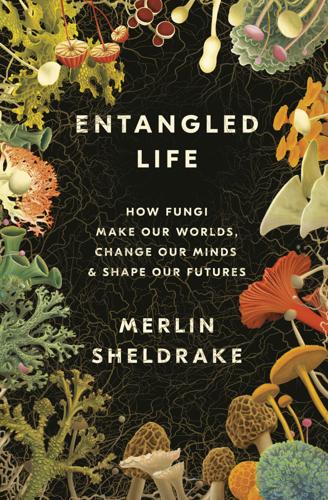
Entangled Life: How Fungi Make Our Worlds, Change Our Minds & Shape Our Futures
by
Merlin Sheldrake
Published 11 May 2020
London, UK: Faber and Faber. Levin M. 2012. Morphogenetic fields in embryogenesis, regeneration, and cancer: non-local control of complex patterning. Biosystems 109: 243–61. Levin M. 2011. The wisdom of the body: future techniques and approaches to morphogenetic fields in regenerative medicine, developmental biology and cancer. Regenerative Medicine 6: 667–73. Levin SA. 2005. Self-organization and the emergence of complexity in ecological systems. BioScience 55: 1075–79. Lévi-Strauss C. 1973. From Honey to Ashes: Introduction to a Science of Mythology, 2. New York, NY: Harper & Row. Lewontin R. 2001.
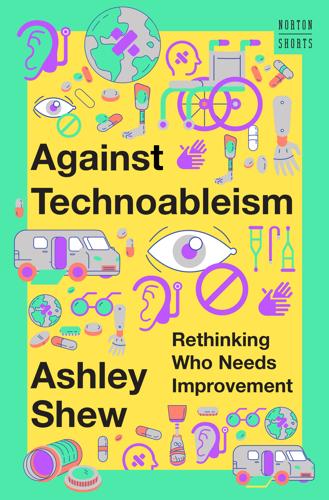
Against Technoableism: Rethinking Who Needs Improvement
by
Ashley Shew
Published 18 Sep 2023
We can share experiences and not be the same, and we can laugh about it sometimes. CHAPTER 6 Accessible Futures THE FUTURE IS DISABLED Technofuturists want to believe that in the future utopia there will be no disability. But despite eugenic and transhumanist imagination about perfecting human beings, about life extension, about regenerative medicine, about neural implants, and the merging of “man” and machine, the fact is that in the future, we can expect more disability, not less. We should expect both more ways to be disabled and more people existing with disabilities. The future is disabled. This is a tagline of the Disability Visibility Project and the title of a new book of poetry by Leah Lakshmi Piepzna-Samarasinha.

Science Fictions: How Fraud, Bias, Negligence, and Hype Undermine the Search for Truth
by
Stuart Ritchie
Published 20 Jul 2020
Since his 2008 paper Macchiarini’s reputation as a surgical genius had blossomed, and in 2010 he’d been recruited – at the recommendation of fourteen professors who already worked there – by Sweden’s Karolinska Institute, where he became a visiting professor, and its associated Karolinska Hospital, where he was made a lead surgeon. The Karolinska Institute isn’t just the number-one university in a country with a lot of great universities; it’s the home of the Nobel Prize in Physiology or Medicine. It made perfect sense that Macchiarini, a surgeon who was revolutionising regenerative medicine with his ingenious stem cell techniques, would be employed by such an august institution. In July 2011, the Institute excitedly announced that the next step had been taken: Macchiarini had just successfully transplanted, ‘for the first time in history’, a completely synthetic carbon-silicon trachea, seeded with stem cells, into a cancer patient at the Karolinska Hospital.5 In November that year, the scientific paper reporting the details of the operation was published, by which time Macchiarini had performed a similar operation on another Karolinska patient.6 The paper, again published in the Lancet, described the ‘solid evidence’ of the transplantation’s success.
…
33 Macchiarini clearly used his ‘breakthrough’ operations to burnish his reputation and fame. But he was also an asset to the Karolinska Institute and its planned international expansion. It has been suggested that the university’s association with the superstar surgeon helped to grease the wheels of its new regenerative medicine centre that was being set up in Hong Kong.34 Sheer panic and embarrassment were likely also a factor in their wanting to cover up the case: a university with as high a standing as the Karolinska would hardly be keen to admit to themselves, let alone the public, that they’d let a lethally dangerous fraudster loose on vulnerable patients.

The Driver in the Driverless Car: How Our Technology Choices Will Create the Future
by
Vivek Wadhwa
and
Alex Salkever
Published 2 Apr 2017
The tissue designer suits the scaffolding design to the target tissue, using inert gels to support fragile cell structures or to create gaps, channels, or void spaces that reproduce physical features of natural tissue, and develops the bioprocess protocols to create from the appropriate cells a bio-ink from which the body will make the target tissue. After designing and testing the bio-ink mixture, the designer can load up the bioprinter and, layer by layer, build the desired tissue structure. In a paper released in April 2014, Wake Forest University scientists and regenerative-medicine expert Anthony Atala described several successful trials to create de novo vaginas for young girls whose vaginas had been missing or malformed at birth.4 According to the trial results, the implanted vaginas, built using 3-D printing and bio-ink, worked quite well. Atala has also bio-printed bladders in clinical trials, and is working toward creating more-complex organs with detailed vascular structures, such as kidneys and livers.
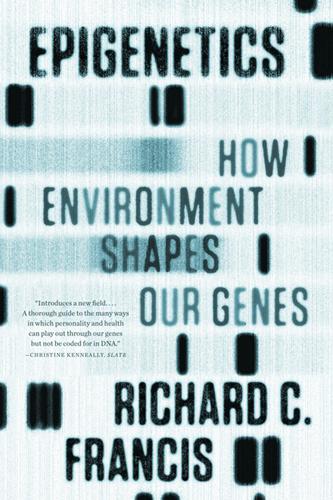
Epigenetics: How Environment Shapes Our Genes
by
Richard C. Francis
Published 14 May 2012
Vogel, et al. (2010). “From monogenic to polygenic obesity: Recent advances.” Eur Child Adolesc Psychiatry 19(3): 297–310. Hipkin, L. J., I. F. Casson, et al. (1990). “Identical twins discordant for Kallmann’s syndrome.” J Med Genet 27: 198–199. Hipp, J., and A. Atala (2008). “Sources of stem cells for regenerative medicine.” Stem Cell Rev 4(1): 3–11. Hisamuddin, I. M., and V. W. Yang (2006). “Molecular genetics of colorectal cancer: An overview.” Curr Colorectal Cancer Rep 2(2): 53–59. Hobbes, T. (1651/1996). Leviathan, ed. R. Tuck. New York: Cambridge University Press. Hoch, S. L. (1998). “Famine, disease, and mortality patterns in the parish of Borshevka, Russia, 1830–1912.”
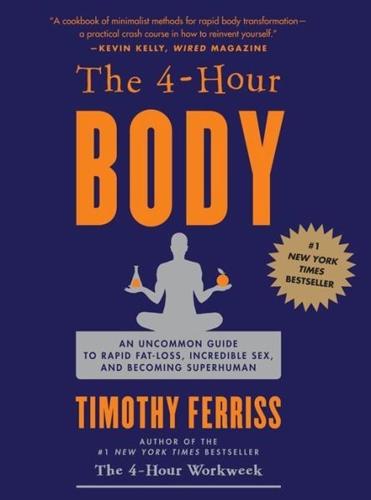
The 4-Hour Body: An Uncommon Guide to Rapid Fat-Loss, Incredible Sex, and Becoming Superhuman
by
Timothy Ferriss
Published 1 Dec 2010
When I contacted the sports scientist responsible for the injections to ask for $1,500 to help defray the costs, the e-mail response was as unorthodox as the treatment: Why would you even waste your time asking me for this when you can just go out and make far more money? Wow. In scientific parlance, the whole thing was a total cluster-fuck. Not because PRP, for example, doesn’t work (I believe it will completely revolutionize regenerative medicine), but because I didn’t find the right person to administer it. There are a lot of pitfalls when you seek out the cutting-edge: snake oil, and con artists who capitalize on the desperate, among other things. How then can you, the reader, with no desire to waste $7,000 –20,000, weed out the junk science and charlatans?
…
Is it possible that, by amplifying cell replication, you increase the likelihood of dangerous cancerous growth? Perhaps. It’s simply beyond our technology to guarantee one outcome or another, so I’m avoiding TA-65 as well. But if not in global therapies, where is the promised land? Until we can go to Walmart and get a RoboCop makeover with regenerative medicine, there are a few alternatives in a second short list. These are the protocols I am currently using. All of them are low-cost, low-tech, and low-risk. Most of them also provide athletic or body composition benefits, even if their life-extension effects are later debunked: 1. CYCLES OF 5–10 GRAMS OF CREATINE MONOHYDRATE (COST: $20/MONTH) Creatine monohydrate, popular among power athletes since its commercialization in 1993, has recently become a candidate for minimizing or preventing the development of Alzheimer’s, Parkinson’s, and Huntington’s diseases.
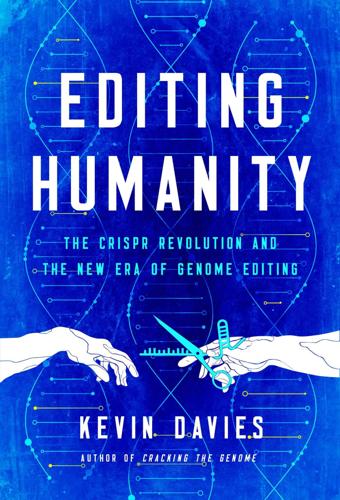
Editing Humanity: The CRISPR Revolution and the New Era of Genome Editing
by
Kevin Davies
Published 5 Oct 2020
Senate Committee on Health, Education, Labor & Pensions, “Gene Editing Technology: Innovation and Impact,” November 14, 2017, https://www.help.senate.gov/hearings/gene-editing-technology-innovation-and-impact. 11. Pope Francis, “Address of His Holiness Pope Francis to participants at the International Conference organized by the Pontifical Council for Culture on Regenerative Medicine,” April 28, 2018, http://w2.vatican.va/content/francesco/en/speeches/2018/april/documents/papa-francesco_20180428_conferenza-pcc.html. 12. C. Brokowski, “Do CRISPR Germline Ethics Statements Cut It?,” CRISPR Journal 1, (2018): 115–125, https://www.liebertpub.com/doi/10.1089/crispr.2017.0024. 13.
…
Rob Wright, “A CEO’s most formative leadership experience,” Life Science Leader, February 25, 2019, https://www.lifescienceleader.com/doc/a-ceo-s-most-formative-leadership-experience-0001. 20. Rob Wright, “John Leonard’s latest adventure—readying Intellia Therapeutics for the long haul,” Life Science Leader, March 1, 2019, https://www.lifescienceleader.com/doc/john-leonard-s-latest-adventure-readying-intellia-therapeutics-for-the-long-haul-0001. 21. Alliance for Regenerative Medicine, “2017 Annual Dinner,” YouTube video, 1:10:07, last viewed May 2, 2020, https://www.youtube.com/watch?v=wPKyr092HlE. 22. Amy Dockser Marcus, “A year of brutal training for racing in the Andes,” Wall Street Journal, February 10, 2017, https://www.wsj.com/articles/a-year-of-brutal-training-for-racing-in-the-andes-1486814400. 23.

Critical: Science and Stories From the Brink of Human Life
by
Matt Morgan
Published 29 May 2019
‘We have learnt lessons from space exploration on how to nourish and maintain the body’s muscles when under extreme stress.’ Hides, J. et al. Parallels between astronauts and terrestrial patients – Taking physiotherapy rehabilitation ‘To infinity and beyond’. Musculoskelet Sci Pract 27 Suppl 1, S32–S37 (2017). ‘Machines that replace the functions of the liver . . .’ Nicolas, C. T. et al. Concise Review: Liver Regenerative Medicine: From Hepatocyte Transplantation to Bioartificial Livers and Bioengineered Grafts. Stem Cells 35, 42–50 (2017). ‘. . . and pancreas . . .’ Breton, M. et al. Fully integrated artificial pancreas in type 1 diabetes: modular closed-loop glucose control maintains near normoglycemia. Diabetes 61, 2230–2237 (2012). 8: THE BLOOD ‘Carl Sagan, one of the most celebrated scientists of the last 100 years, famously said, “We are made of star-stuff.” ’ The Cosmic Connection: An Extraterrestrial Perspective.

Thinking Machines: The Inside Story of Artificial Intelligence and Our Race to Build the Future
by
Luke Dormehl
Published 10 Aug 2016
In 2014, a venture capital firm in Hong Kong named Deep Knowledge Ventures announced that it had appointed an AI to its board of directors. Given the same level of influence as human board members, the role of the Artificial Intelligence was to weigh up financial and business decisions regarding investments in biotechnology and regenerative medicine. At least according to its creators, the AI’s strength was its ability to automate the kind of due diligence and historical knowledge of trends that would be difficult for even a human to spot. Whichever way you slice it, work as we know it is about to change. The Positives of Techno-Replacement In 1589, the British inventor William Lee invented a stocking frame knitting machine.

Life at the Speed of Light: From the Double Helix to the Dawn of Digital Life
by
J. Craig Venter
Published 16 Oct 2013
They have created novel zinc-finger designs that are intended to bind with new target sequences.27 The Boston team has engineered new circuits in yeast, a eukaryote, using modular, functional parts from the eukaryotes themselves and “wiring” them up with the help of zinc fingers.28 There are many immediate applications of this work, such as helping to develop stem cells for regenerative medicine, and in-cell devices and circuits for diagnosing early stages of cancer and other diseases. This method may also equip groups of cells to perform higher-order computational tasks for processing signals in the environment in sensing applications. Efforts by others are under way to extend and modify the existing genetic code, to code for new amino acids that don’t exist in nature.
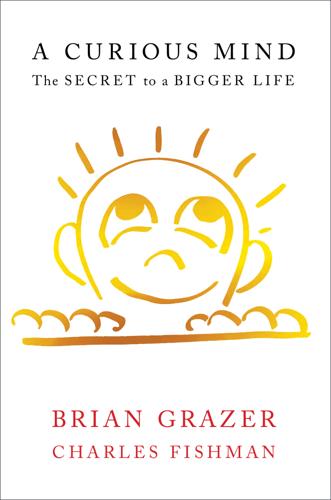
A Curious Mind: The Secret to a Bigger Life
by
Brian Grazer
and
Charles Fishman
Published 6 Apr 2014
Rugby Foundation Kenneth Watman: analyst at RAND Corporation specializing in strategic defense and nuclear deterrence James Watson: molecular biologist, geneticist, zoologist, codiscoverer of the structure of DNA, Nobel laureate in medicine Andrew Weil: physician, naturopath, teacher, writer on holistic health Jann Wenner: cofounder and publisher of Rolling Stone, owner of Men’s Journal and US Weekly Kanye West: musician, music producer, fashion designer Michael West: gerontologist, entrepreneur, stem cell researcher, works on regenerative medicine Floyd Red Crow Westerman: musician, political activist for Native American causes Vivienne Westwood: fashion designer who developed modern punk and new wave fashions Peter Whybrow: psychiatrist, endocrinologist, researches hormones and manic-depression Hugh Wilhere: spokesman for the Church of Scientology Pharrell Williams: musician, music producer, fashion designer Serena Williams: professional tennis player Willie L.
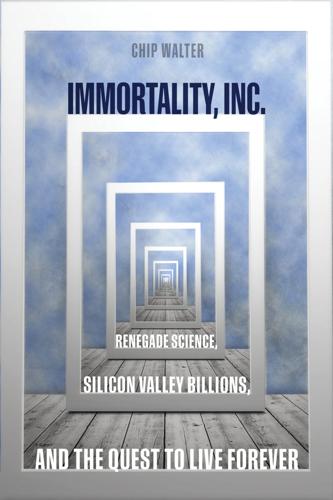
Immortality, Inc.
by
Chip Walter
Published 7 Jan 2020
Stroke and heart disease continue to decline, but they are still the world’s number one killers. Meanwhile, Silicon Valley’s millionaires and billionaires continue to transform their high-technology plays into longevity plays, investing money in venture funds like Proteus, and start-ups with names like Halcyon Molecular and Butterfly Sciences. Some analysts reckon the market for regenerative medicine will hit $20 billion by 2025. Aubrey de Grey was still funding multiple longevity research projects including one at the University of Arizona and another at Yale. His SENS Research Foundation was doing so well that by early 2018 the foundation had closed five million dollars in donations when it was only asking for $250,000.
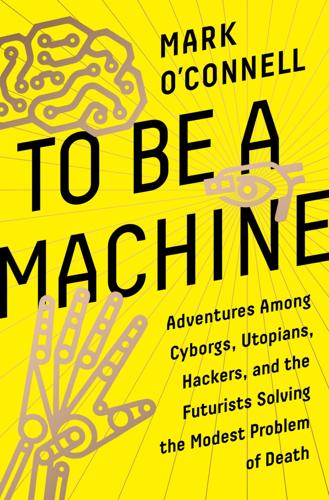
To Be a Machine: Adventures Among Cyborgs, Utopians, Hackers, and the Futurists Solving the Modest Problem of Death
by
Mark O'Connell
Published 28 Feb 2017
He said: “For every day that I bring forward the defeat of aging, I’m saving a hundred thousand fucking lives!” He brought his fist down hard on the distressed wood of the tabletop. He said: “That’s thirty September 11ths every week! That is thirty World Trade Centers I’m preventing.” The science of regenerative medicine was complicated, but Aubrey had at his disposal an array of simplifications for the lay interlocutor. Among his favored rhetorical gambits was to ask you to think of your body as a classic car, as a complex system of interlocking mechanisms that, through regular maintenance, could be kept more or less indefinitely in a roadworthy state.

Pivot: The Only Move That Matters Is Your Next One
by
Jenny Blake
Published 14 Jul 2016
Career Roomba Syndrome: Brad Zomick, “Career Roomba Syndrome: How to Cure Your Lack of Passion and Find Direction in Your Career Path,” ThoughtCatalog.com, May 15, 2015, thoughtcatalog.com/brad-zomick/2015/05/career-roomba-syndrome-how-to-cure-your-lack-of-passion-and-find-direction-in-your-career-path/. our addiction to new ideas: Scott Belsky, Making Ideas Happen: Overcoming the Obstacles Between Vision and Reality (New York: Portfolio/Penguin, 2012), 71. average life span of human cells: Institute for Stem Cell Biology and Regenerative Medicine, Stanford Medicine, “Research,” stemcell.stanford.edu/research/; Nicholas Wade, “Your Body Is Younger Than You Think,” New York Times, August 2, 2005, www.nytimes.com/2005/08/02/science/your-body-is-younger-than-you-think.html. Our bodies cycle through circadian rhythms: National Institute of General Medical Sciences, “Circadian Rhythms Fact Sheet,” last modified October 1, 2015, www.nigms.nih.gov/Education/Pages/Factsheet_CircadianRhythms.aspx.
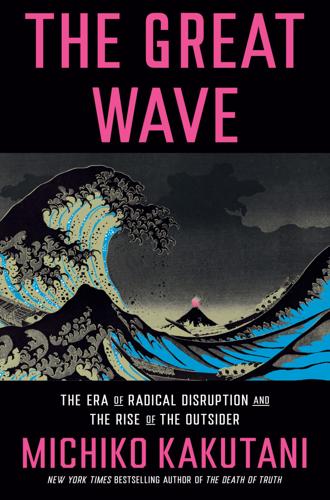
The Great Wave: The Era of Radical Disruption and the Rise of the Outsider
by
Michiko Kakutani
Published 20 Feb 2024
The novel, the book’s editors wrote, “prompts serious reflection about our individual and collective responsibility for nurturing the products of our creativity and imposing constraints on our capacities to change the world around us”—a particularly important concept “in an era of synthetic biology, genome editing, robotics, machine learning, and regenerative medicine.” One endnote in this edition of the book compares the remorse that Victor Frankenstein feels after his creature begins killing people to “J. Robert Oppenheimer’s sentiments when he witnessed the unspeakable power of the atomic bomb” and lamented, “I am become death, the destroyer of worlds.”

Protocol: how control exists after decentralization
by
Alexander R. Galloway
Published 1 Apr 2004
“Populations” defined nationally or ethnically are also defined informatically. (Witness the growing business of population genomics.) Individual subjects are not only civil subjects, but also medical subjects for a medicine increasingly influenced by genetic science. The ongoing research and clinical trials in gene therapy, regenerative medicine, and genetic diagnostics reiterate the notion of the biomedical subject as being in some way amenable to a database. In addition to this bio-informatic encapsulation of individual and collective bodies, the transactions and economies between bodies are also being affected. Research into stem cells has ushered in a new era of molecular bodies that not only are self-generating like a reservoir (a new type of tissue banking), but that also create a tissue economy of potential biologies (lab-grown tissues and organs).
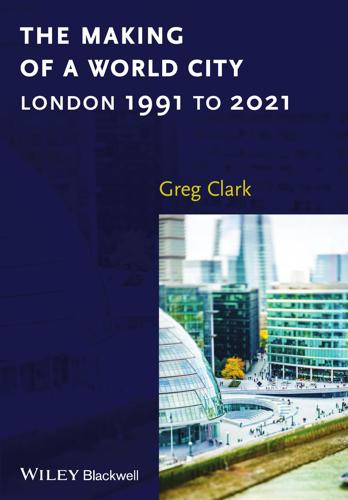
The Making of a World City: London 1991 to 2021
by
Greg Clark
Published 31 Dec 2014
Two substantial actions are required: address job creation in new sectors much more intensively and increase employability and aspirations amongst the poorest and least qualified London residents. London has new strategies for job creation in key growth sectors such as digital technologies, regenerative medicine, clean technology, recycling, and others. These nascent sectors are difficult to grow in a mature city where land use, business finance and talent are oriented towards successful and established sectors. Assembling the right land parcels, providing the right financial incentives, and supporting the R&D and skills training requirements all form part of the necessary offer.

Fragile Lives: A Heart Surgeon’s Stories of Life and Death on the Operating Table
by
Stephen Westaby
Published 9 Feb 2017
Stuart McConchie, past chief executive of the HeartWare Company and Jarvik Heart, came to help us with that. The Welsh connection put me in contact with the Nobel Prize-winner Professor Sir Martin Evans of Cardiff University, who first isolated foetal stem cells. With his colleague Ajan Reginald and the company Celixir he has worked on a heart-specific cell for regenerative medicine. With pumps and cells we aim to create a definitive alternative to heart transplantation. Despite a degree in biochemistry and a PhD in the bioengineering of mechanical hearts I’m a computer-illiterate technophobe who’s unable to perform the simplest repair on a car. So I’ve relied on good old-fashioned secretaries.

MONEY Master the Game: 7 Simple Steps to Financial Freedom
by
Tony Robbins
Published 18 Nov 2014
Insurance companies are required by law to be members of the guaranty association in states in which they are licensed to do business. Each state has its own maximum amount that you are covered up to, and in most states, that varies per person up to $300,000 to $500,000. 17. Dr. Anthony Atala, director of the Wake Forest Institute for Regenerative Medicine, has been creating and implanting organs like this for more than a decade. CHAPTER 5.4 TIME TO WIN: YOUR INCOME IS THE OUTCOME * * * The question isn’t at what age I want to retire, it’s at what income. —GEORGE FOREMAN Annuities have long been the whipping boy of the financial industry.
…
According to Ray, work is already being done to create genetically enhanced red blood cells that may one day carry enough oxygen to allow a diver to last 40 minutes underwater on one breath—or to save a soldier’s life on the battlefield. Scientists are working on ways to use 3-D printers to create custom organs and other body parts for you when you need them, eliminating the need for dangerous, expensive donor transplants. Dr. Anthony Atala, director of the Wake Forest Institute for Regenerative Medicine, says, “In theory, anything that is grown inside the body can be grown outside the body.” Dr. Atala has already created fully functioning human bladders in the lab and completed the transplants. In the last 15 years, none of the tissues made from stem cells has ever been rejected by the body.
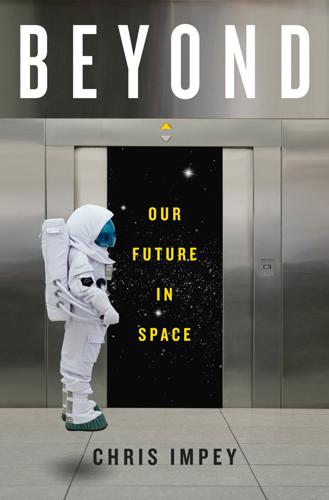
Beyond: Our Future in Space
by
Chris Impey
Published 12 Apr 2015
They’re molecular motors, complete with propellers, universal joints, rotors, gears, and bushings.10 Cancer therapy is high on the list of medical applications, since the current treatments rely on drugs and radiation, which are blunt and often toxic tools. Nanobots would be able to move directly to a cancer site, distinguish between malignant and normal cells, and do treatment without side effects or damage to the immune system. The potential of using nanobots for drug delivery and regenerative medicine has galvanized medical researchers. Federal grants for applying nanotechnology to medicine now exceed $2 billion (Figure 42). Similar capabilities will be focused on the environment, where nanosponges can be used to clean up oil spills and neutralize toxic chemicals. These nanosponges could also increase the efficiency of oil extraction, avoiding adverse effects of fracking.

Falter: Has the Human Game Begun to Play Itself Out?
by
Bill McKibben
Published 15 Apr 2019
We can do a better job without any of that.” By growing our food on vertical stands, he means. “As we extend longevity, we radically expand the resources of life.” That’s an ethical improvement on, say, Michael West, currently chair of a California start-up called BioTime, which specializes in “regenerative medicine.” West, who organized the first effort to isolate human stem cells for cloning purposes, was once asked whether immortality wouldn’t lead to overpopulation. Sure, he said, but “why put the burden on people now living, people enjoying the process of breathing, people loving and being loved.
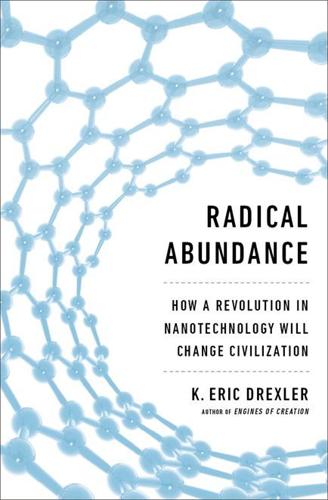
Radical Abundance: How a Revolution in Nanotechnology Will Change Civilization
by
K. Eric Drexler
Published 6 May 2013
See also Proteins Popper, Karl, 19, 126 Population growth, food production and, 40–42, 44, 231 POSCO, 52 Poverty and economic development, 168, 243, 247–248 Precursors, of atomically precise manufacturing, 279, 303–306 Printing, 4 3D, 76–77 Proceedings of the National Academy of Sciences (journal), xiv, 27n Production atomically precise manufacturing and the transformation of, 225–226 atomically precise manufacturing and capacity, 253–254, 265 changes in concept of, 49 cost of atomically precise manufacturing, 157 food, 231–232 industrial (see Industrial production) Productive Nanosystems: A Technology Roadmap, 216 Productivity, of atomically precise manufacturing, 54, 276–277 scaling laws and, 75, 84, 149–150, 154, 225 See also Costs, atomically precise manufacturing and Products atomically precise manufacturing, 147–149, 159–174 atomically precise manufacturing and improvements in performance, 162–166 consumer, 224–225, 253 cost and performance of, vs. design and analysis, 141–143 cost of atomically precise manufacturing, 141–143, 168–173 development cycle, 244–245 engineering reliable, 124–125, 141 improved performance through scaling, 164–166 Proteins engineering of, 25–27, 29–30, 32, 182–184, 187, 212 fold prediction, 29, 103, 308n as materials, 26, 296 as objects, 24, 26, 69, 297 as molecular machines, 26, 69–70 motion of, 69 self-assembly and, 26 Quantum chemistry, 33, 157 Quantum dots, 185, 188 Quantum Information Science and Technology Roadmap (QISTR), 215–216 Quantum physics, 46–47, 93–94, 98 Radical abundance, 286 aspects of, 52 digital revolution and, xii, 3, 6–7, 49 emergence of, 274 enabling technology, 147–158 products of, 159–174 scaling laws and, 59 Range of possibility, science and engineering and expanding, 125–126 Ralph Merkle, 321 Raw materials, atomically precise manufacturing and, 169–170, 172, 230–231 Re-entry, atmospheric 18, 20 Regenerative medicine, 238 Relativity, 95, 96 RepRap community, 77 Research and development, Industrial Revolution and systematic, 46 Resilience, afforded by atomically precise manufacturing, 248–249 Resources, material and energy, 246 common, atomically precise manufacturing and 169–170, 230 demand, atomically precise manufacturing and, 248 prices, atomically precise manufacturing and, 255 reducing international competition for, 266–267, 267–268 scarcity, atomically precise manufacturing and, 33–34, 169, 230–231, 248 Ribosomes, 81, 183, 302 Risks arms and, 35, 236, 257, 259–260, 267 cooperative strategies for avoiding needless, 270–272 disruptive change, 243 industrial accidents and, 171 popular misconceptions of, 201, 208 uncertainty and, 240, 261, 269–270 RNA, 70, 81, 237 Roadmapping Moore’s law and, 215 for progress in atomically precise manufacturing, 211, 216–220 quantum information systems, 215–216 in semiconductor industry, 214–216 Robots, nanotechnology and focus on tiny, 199–200, 201, 208–209 Rocket technology, 133–135 Röntgen, Wilhelm, 134 Safety margins, 105, 141, 142 Scaling laws, 56, 58, 63n, 149–150, 154, 162, 163, 165, 289, 299 atomically precise manufacturing and, 75 improved product performance through, 164–166 time, 58–59 Scanning-probe techniques, 32, 185–186 Schrödinger’s equation, 98 Schwinger, Julian, 98 Science approach to knowledge, 121–123 curiosity-driven investigation in, 129–130 engineering vs., 28–30, 104–105, 108–115, 121–130 Industrial Revolution and growth of, 45 inquiry and, 113–116, 121–130 natural phenomena and, 124–125 parable of the blind man and the elephant and, 108–111 seeking precision in, 123–124 simplicity of theories in, 128–129 testing theories in, 126–127 Science-intensive engineering, 129, 180, 213–214, 217 Science (journal), 20n, 100, 198n Scientific American (journal), 208 Scientific research, collaboration in, 271–272, 312 Scientific Review (journal), 133 Security technologies, atomically precise manufacturing and, 235–236, 259–266 Seeman, Nadrian, 184 Self-assembly, 144, 186–188, 190–193, 218, 293, 297, 299–300 thermal motion and, 71, 300 Self-replicating machines, 201.
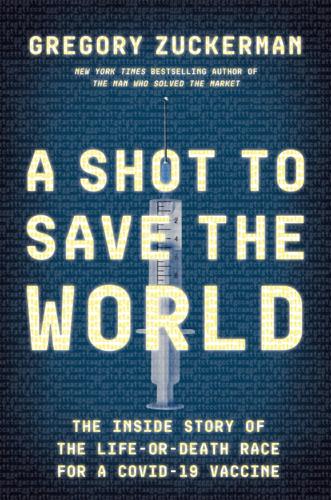
A Shot to Save the World: The Inside Story of the Life-Or-Death Race for a COVID-19 Vaccine
by
Gregory Zuckerman
Published 25 Oct 2021
* * * • • • The importance of Warren and Rossi’s work was instantly understood. They had reprogrammed ordinary cells into pluripotent stem cells simply by injecting them with synthetic mRNA, developing a technology that had “broad applicability for basic research, disease modeling, and regenerative medicine,” they argued in their paper. Warren and Rossi were the first to show that something potentially therapeutic could be produced from mRNA, and that they could turn cellular clocks back. The work was named one of 2010’s top ten scientific breakthroughs by the journal Science, and Time magazine included Rossi in its Person of the Year issue, saying his “new method could help move stem cell–based treatments for diseases such as diabetes and Parkinson’s more quickly from the lab to the clinic.”
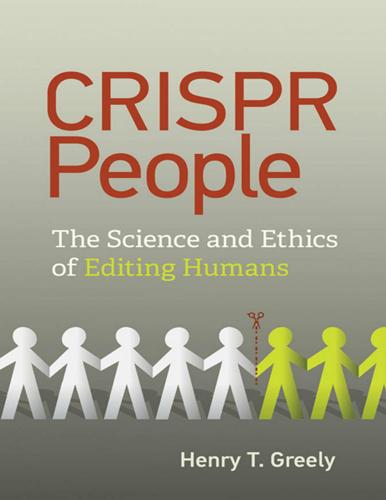
CRISPR People: The Science and Ethics of Editing Humans
by
Henry T. Greely
Published 22 Jan 2021
Wheeler, Louanne Hudgins, et al., “Challenges in the Clinical Application of Whole-Genome Sequencing,” The Lancet 375 (May 15, 2010): 1749–1751. 11. I have met Porteus perhaps 10 or 12 times. I like him but cannot say I know him well—not well enough to write a CRISPR People box about him. 12. “Porteus Lab, Division of Stem Cell Transplantation and Regenerative Medicine,” Stanford Medicine, http://med.stanford.edu/porteuslab.html. 13. Alex Lash, “‘JK Told Me He Was Planning This’: A CRISPR Baby Q&A with Matt Porteus,” Xconomy, December 4, 2018, https://xconomy.com/national/2018/12/04/jk-told-me-he-was-planning-this-a-crispr-baby-qa-with-matt-porteus. 14.

Radicals Chasing Utopia: Inside the Rogue Movements Trying to Change the World
by
Jamie Bartlett
Published 12 Jun 2017
The three main transhumanist technologies that excite transhumanists like Zoltan are life extension, cryonic freezing and mind uploading. Each of them is advancing quickly. But they are also highly speculative. Radical life extension seeks to use a variety of medical advances—tissue rejuvenation, regenerative medicine, gene therapy, molecular repair—to slow and eventually stop the process of ageing. Ageing, after all, is simply an accumulation of damage to cells, tissues and molecules, and so it stands to reason there are molecular and cellular solutions. Rather than seeing ageing as inevitable, Zoltan thinks it should be viewed like any other disease.
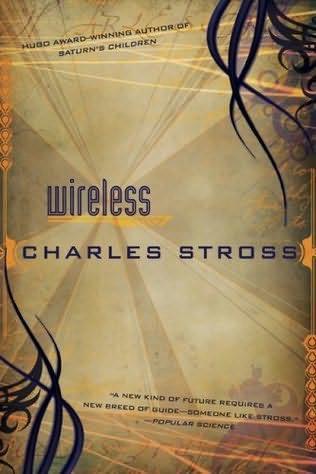
Wireless
by
Charles Stross
Published 7 Jul 2009
He won’t have any use for you—he’s the chief eunuch! He’s an ex-man, and his special power is chopping off heads! He probably thinks testosterone is something you catch from sitting too many exams.” “Oh, I’m sure I can fix that,” a dusky six-armed beauty informed me with a flick of her aristocratic nose. “I didn’t study regenerative medicine for nothing.” Her arch look took in Laura. “Why don’t you just take yourself and your tin-plate tart and leave us to sort out the matter of succession? She was only going to go down hard in the talent-show round, anyway.” “Pip-pip!” called Toadsworth, sailing from one vaulted side chamber to another in pursuit of a giggling conical debutante, a silk favor knotted around his monocular.
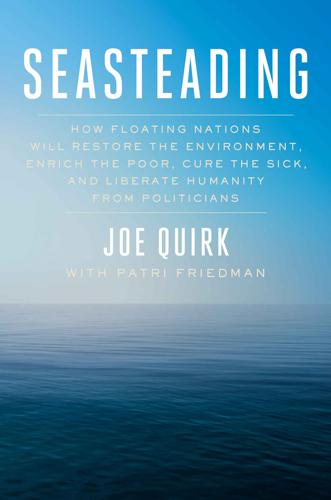
Seasteading: How Floating Nations Will Restore the Environment, Enrich the Poor, Cure the Sick, and Liberate Humanity From Politicians
by
Joe Quirk
and
Patri Friedman
Published 21 Mar 2017
Innovators in many industries have already used 3-D printers to produce hearing aids, race cars, bikinis, perfect statues of their unborn child, and a wheelchair for a puppy. And it’s not just inanimate objects. Medical researchers are printing human body parts out of human cells. Dr. Anthony Atala is director of the Wake Forest Institute for Regenerative Medicine. At TEDMED, an annual conference focusing on the future of medicine, Atala wowed an audience by showing a film of a partial kidney and a two-chambered heart being printed into existence using a normal desktop inkjet printer rigged to print one layer of cells at a time—the invention of Tao Ju from the Department of Computer Science and Engineering at Washington University in Saint.

Spineless: The Science of Jellyfish and the Art of Growing a Backbone
by
Juli Berwald
Published 14 May 2017
When the researchers put the medusoid into a Petri dish and pulsed an electric current through the water, the medusoid fluttered with a motion that looked strikingly like a real baby jellyfish, and hauntingly like a heartbeat. That isn’t a coincidence. Besides helping scientists understand the physics of propulsion, the medusoid was created as a new way to conceive of regenerative medicine. Growing organs to replace damaged ones has long been an idea with great promise, but hearts created from living tissues so far have been too weak to pump blood throughout our bodies. The powerful twitch of the half-synthetic, half-natural medusoid is a new approach to the problem of growing hearts
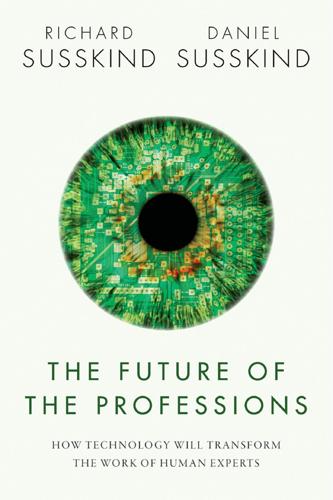
The Future of the Professions: How Technology Will Transform the Work of Human Experts
by
Richard Susskind
and
Daniel Susskind
Published 24 Aug 2015
At CrowdMed, people post their symptoms and crowdsource diagnoses from an online community of 2,000 doctors—so-called ‘Medical Detectives’.42 At InnoCentive, medical institutions crowdsource ideas by offering large online rewards for those who solve their medical ‘challenges’.43 At Watsi, people in need of medical care, but unable to afford it themselves, can use their online crowdfunding platform to raise finance from donors.44 3-D printing techniques enable many medical objects, from casts to prosthetics to dentist’s caps and crowns, to be personalized and then printed on demand. Surgeons scan patient parts and print models of them, to practice on before operating in earnest.45 Nor is the output necessarily inorganic. At the Wake Forest Institute for Regenerative Medicine, progress has been made in constructing a machine to ‘print’ human cells directly onto burn victims. Researchers are creeping towards printing entire organs.46 This matters—on average, twenty-one people a day die in the United States, and just under three in the United Kingdom, waiting for spare organs.47 Increasing computational power has meant that certain fields, previously conceivable in theory but impossible in practice, are now thriving.
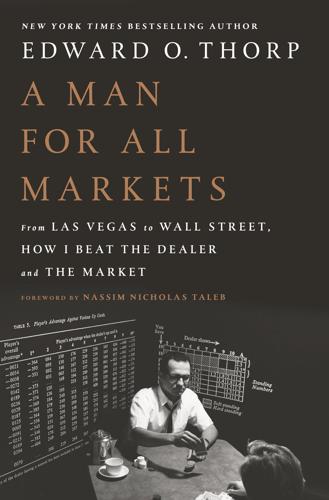
A Man for All Markets
by
Edward O. Thorp
Published 15 Nov 2016
The nation faced a delay in the development of lifesaving therapies, a massive brain drain as our scientists moved overseas to continue their work, and the loss of our lead in stem cell technology. California voters stepped in, approving a $3 billion bond issue to create CIRM, the California Institute for Regenerative Medicine. The purpose was to provide ten years of support for stem cell research freed from the Bush restrictions. CIRM intended to fund five or six centers at university campuses throughout the state, each one of which would eventually get hundreds of millions of dollars. The money would help construct research facilities entirely separate from any federal funding, as well as fund grants for faculty to develop new stem cell treatments for diseases.

A Half-Built Garden
by
Ruthanna Emrys
Published 25 Jul 2022
Sucrose was tree-folk, wearing moss and pouches like Rhamnetin did. They were taller than him, fur shaggier and with a white patch running down one limb. At the patch’s center, raw black flesh covered the spot where a mouth should have been. A scar from an accident? I knew from Rhamnetin that not everyone responded well to their regenerative medicine. In any species disability must be a window on society’s flaws, maybe even an impetus to do something about them. I hadn’t talked with Rhamnetin about how his bad eye affected his life. He had a dozen others, but Ringers might well build tools, interfaces, art, with the assumption that everyone could see 365 degrees of their full spectrum.

Physics of the Future: How Science Will Shape Human Destiny and Our Daily Lives by the Year 2100
by
Michio Kaku
Published 15 Mar 2011
Now rapid-response medical evacuation teams fly the wounded from Iraq and Afghanistan to Europe or the United States, where they receive top-notch medical care. The survival rate for GIs has skyrocketed. And so has the number of soldiers who have lost arms and limbs. As a consequence, the U.S. Army has made it a priority to find a way to grow back limbs. One breakthrough made by the Armed Forces Institute of Regenerative Medicine has been to use a radically new method of growing organs. Scientists have long known that salamanders have remarkable powers of regeneration, regrowing entire limbs after they are lost. These limbs grow back because salamander stem cells are stimulated to make new limbs. One theory that has borne fruit is being explored by Stephen Badylak of the University of Pittsburgh, who has successfully regrown fingertips.

The Zero Marginal Cost Society: The Internet of Things, the Collaborative Commons, and the Eclipse of Capitalism
by
Jeremy Rifkin
Published 31 Mar 2014
Even here, new medical breakthroughs are opening up the possibility of significantly lowering the costs of organ replacements. If replacement tissues and organs are necessary, they will be able to be printed on a 3D printer, again at low or near zero marginal cost, in the not-too-distant future. Three-dimensional printing of human body parts is already well along. The Wake Forest Institute for Regenerative Medicine in North Carolina has recently printed a prototype human kidney using living cells.68 Organovo, a San Diego-based Life Science company, has used 3D bioprinting to print a functioning section of human liver tissue.69 Researchers at the ARC Centre of Excellence for Electromaterials Science at the University of Wollongong in Australia are experimenting using 3D processes to print muscle and nerve cells into living tissue.

Lifespan: Why We Age—and Why We Don't Have To
by
David A. Sinclair
and
Matthew D. Laplante
Published 9 Sep 2019
Luis, who has a PhD in cellular and molecular biology, ran the transgenic mouse facility at the giant biotech company Biogen Idec, but when we first met he was managing a high-end framing company. He’s worked on paintings worth more than my house—and probably more than all my neighbors’ houses together, too—so he’s the right sort of guy for a job that requires exceptional meticulousness. Sitting with her back to Luis is Karolina Chwalek, who has a PhD in regenerative medicine and is our chief of staff, a strict but fair manager who makes sure our team of thirty to forty scientists is funded and remains very much worth funding. Daniel Vera sits next to Luis and is usually staring at at least one and often several screens. He’s the lab’s data guru, having established Florida State University’s Center for Genomics.

The Rise and Fall of Modern Medicine
by
M. D. James le Fanu M. D.
Published 1 Jan 1999
It is possible that the biological therapies just considered might further improve the prognosis in the common age-determined cancers of the breast, lung, gut and so on. But that, as suggested, will pose a substantial financial strain on the health services of the Western world. Similar considerations apply to the more distant and yet unfulfilled promises of ‘regenerative medicine’ with the prospect that customised stem cells from foetal tissue or bone marrow might repair, for example, damaged nerve cells to become a viable treatment for multiple sclerosis or brain disorders such as Parkinson’s and Alzheimer’s. While the everyday practice of medicine, whether in hospital or general practice, is likely to remain much the same, the two driving forces of intellectual enquiry and therapeutic advance, the Big Science that medical research has become and Big Pharma, can scarcely survive in their present form.

The Singularity Is Nearer: When We Merge with AI
by
Ray Kurzweil
Published 25 Jun 2024
The therapy is believed to work via the iPS cells’ releasing growth factors that spur existing heart tissue to regenerate. In effect, they may be tricking the heart into thinking it is in a fetal environment. This procedure is being used for a broad variety of biological tissues. Once we can analyze the mechanisms of iPS action with advanced AI, regenerative medicine will be able to effectively unlock the body’s own blueprints for healing. As a result of these technologies, the old linear models of progress in medicine and longevity will no longer be appropriate. Both our natural intuition and a backward-looking view of history suggest that the next twenty years of advances will be roughly like the last twenty, but this ignores the exponential nature of the process.
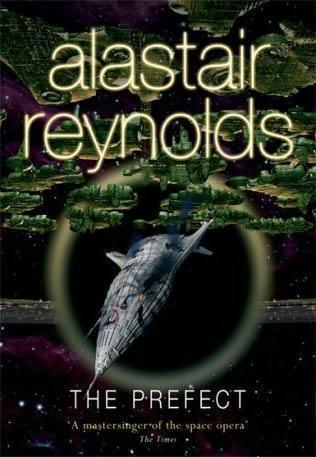
The Prefect
by
Alastair Reynolds
Published 2 Jan 2007
But that couldn't be the answer. This ship had probably been here for decades, and yet the injuries looked fresh. Some form of turquoise salve had been spread over the wounds, but beneath the salve the stumps were still raw. The sleepers hadn't even received basic field care, let alone the emergency regenerative medicine that the Conjoiners should have been able to utilize. "I don't understand — " he began. "I did it," the woman said. "I cut them. I cut them all." "Why?" Dreyfus asked. "To eat them," she said, sounding amazed at his question. "What other reason would there have been?" CHAPTER 13 Thalia found herself once again confronting a waiting polling core.

Future Crimes: Everything Is Connected, Everyone Is Vulnerable and What We Can Do About It
by
Marc Goodman
Published 24 Feb 2015
We are already seeing this in the field of oncology, where individual tumors can be genotyped and personalized cancer treatments engineered to target and kill individual cancer cells while leaving surrounding healthy cells intact. Indeed, a whole host of therapeutics will be enabled by synbio, including new vaccines, advances in regenerative medicine, treatment of malaria, and even cures for congenital deafness. But with this new godlike power to create comes godlike responsibility. Jurassic Park for Reals Though children walking through New York’s American Museum of Natural History can see the skeleton of a long-extinct woolly mammoth on display, they have to use their imaginations to envision what the giant beast looked like as it walked about the earth.